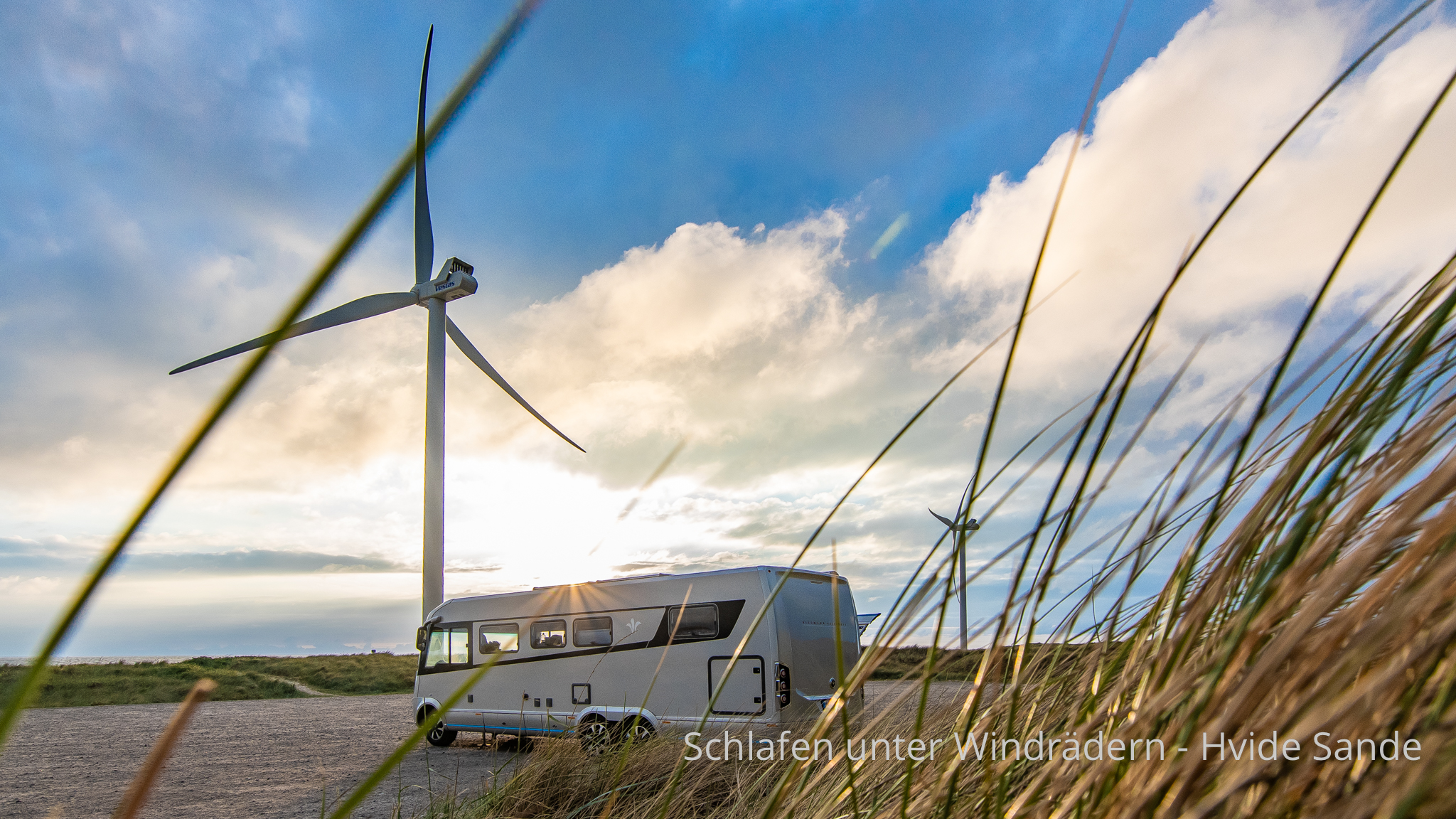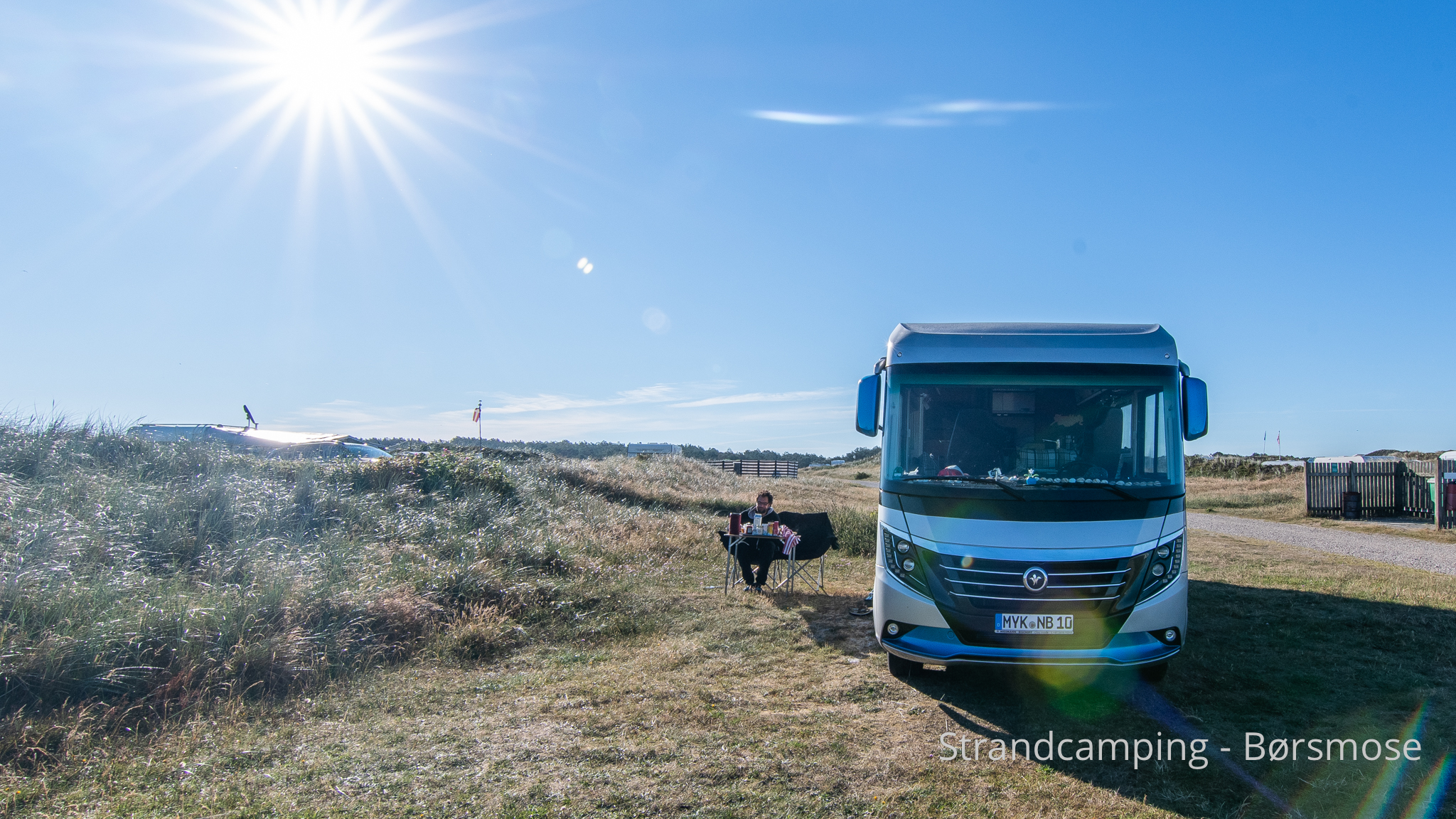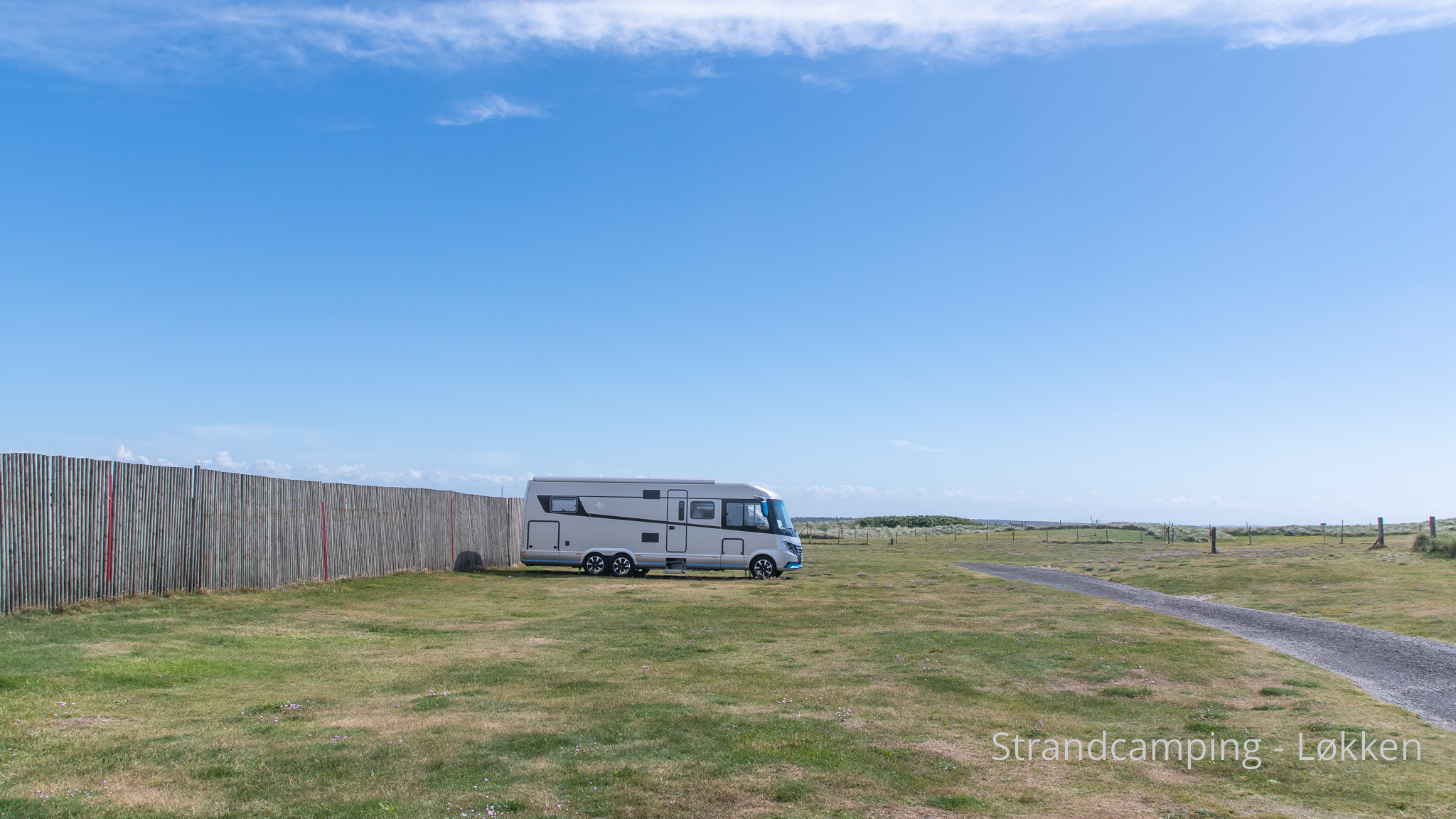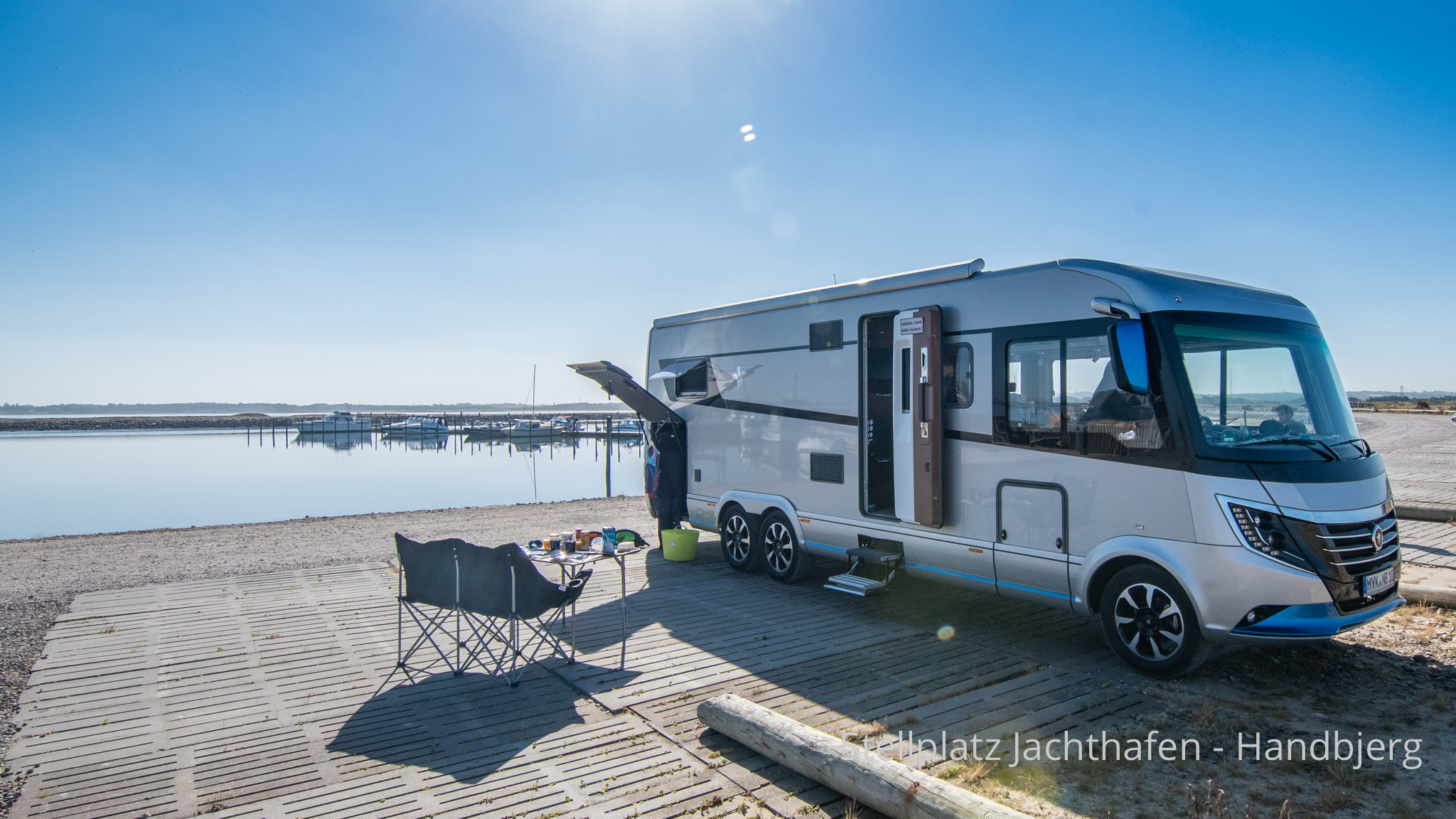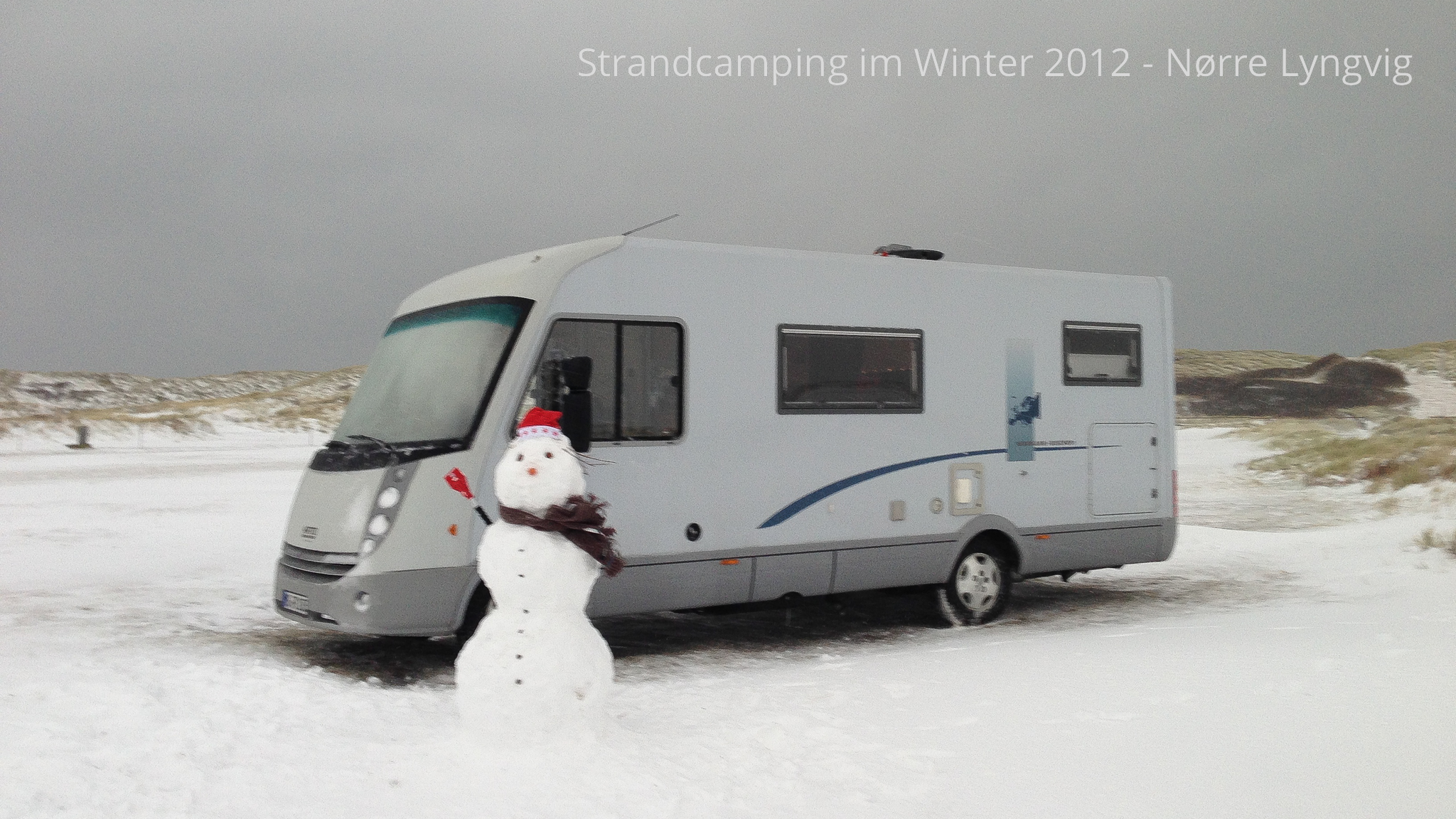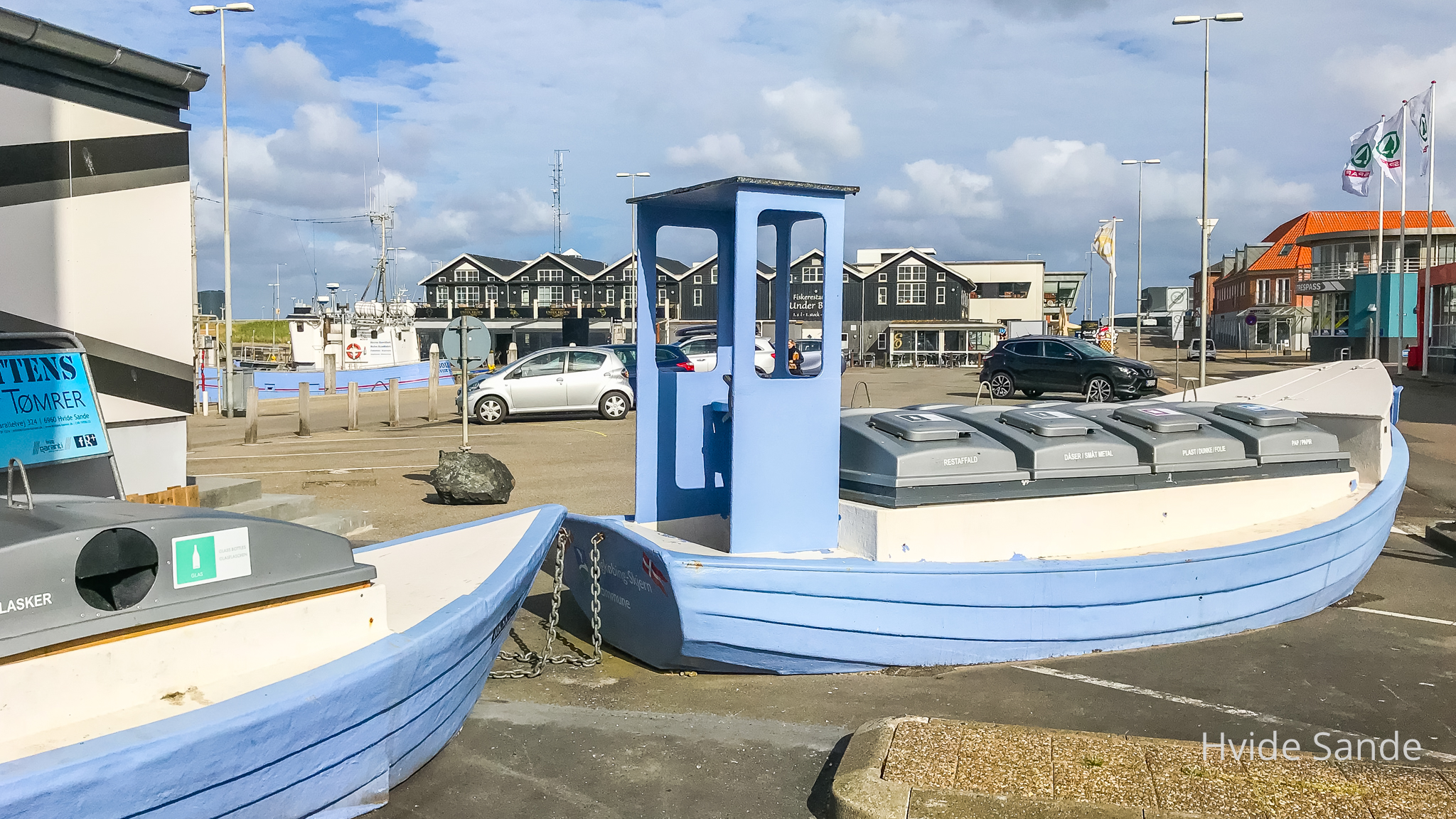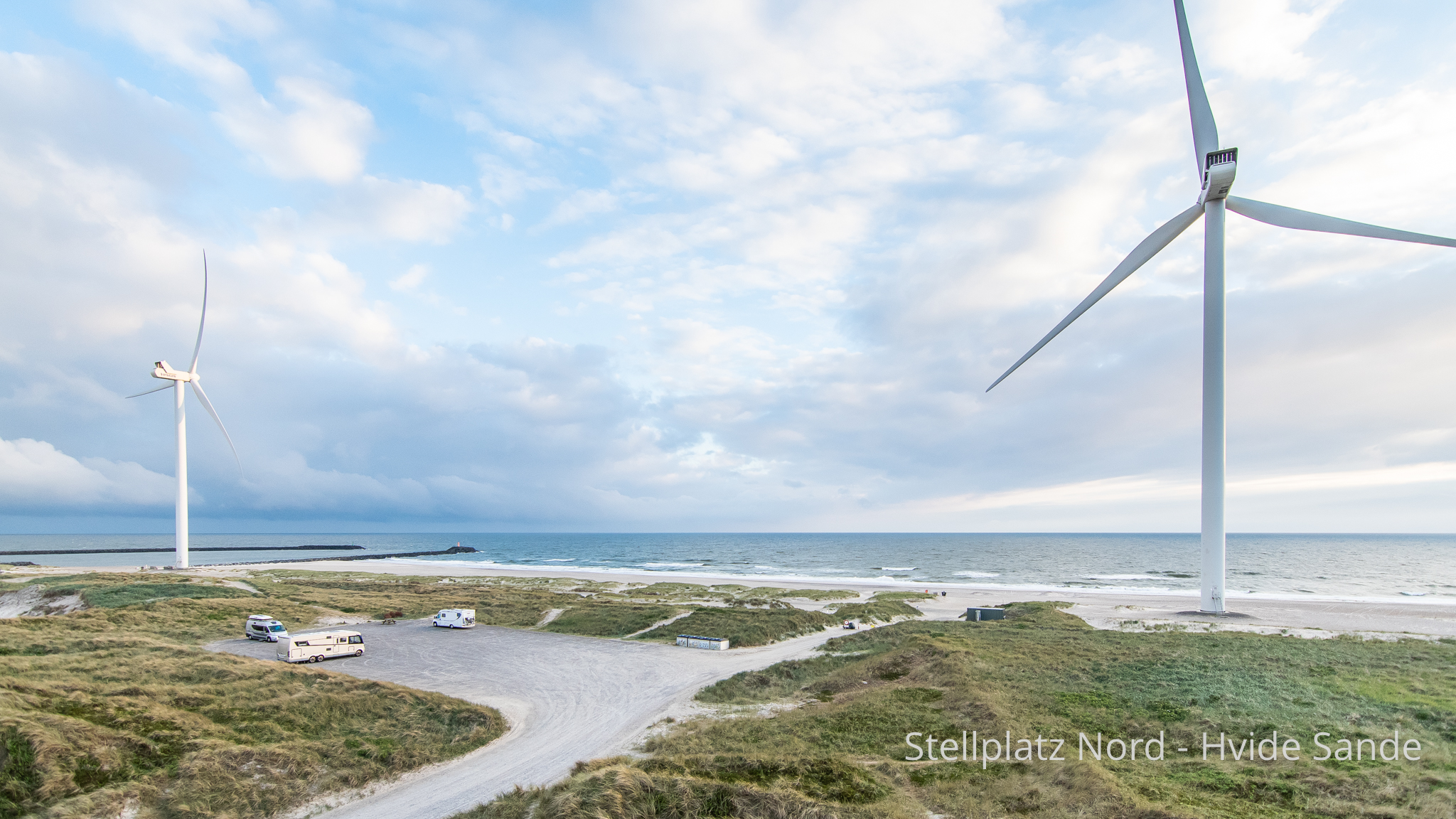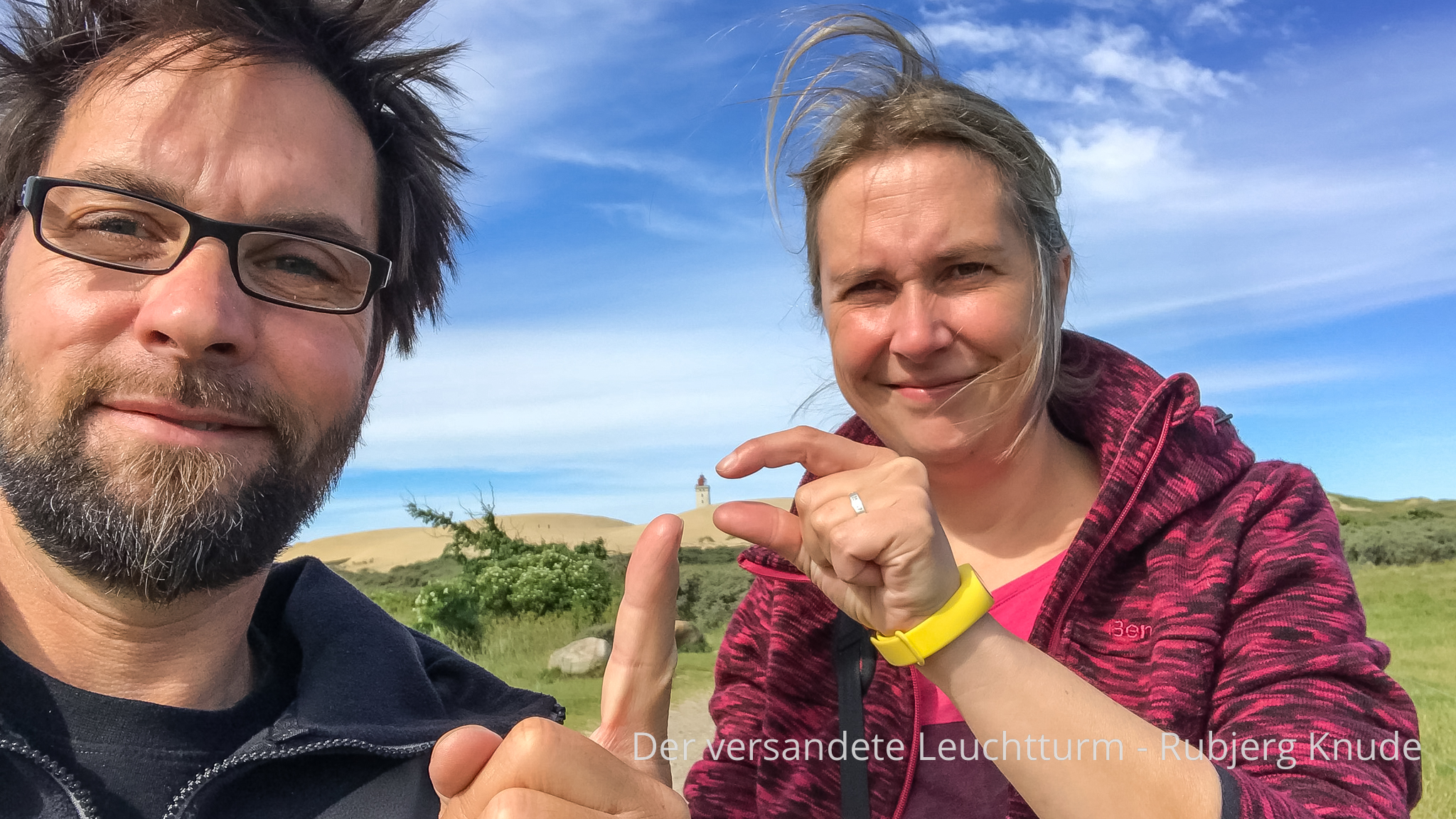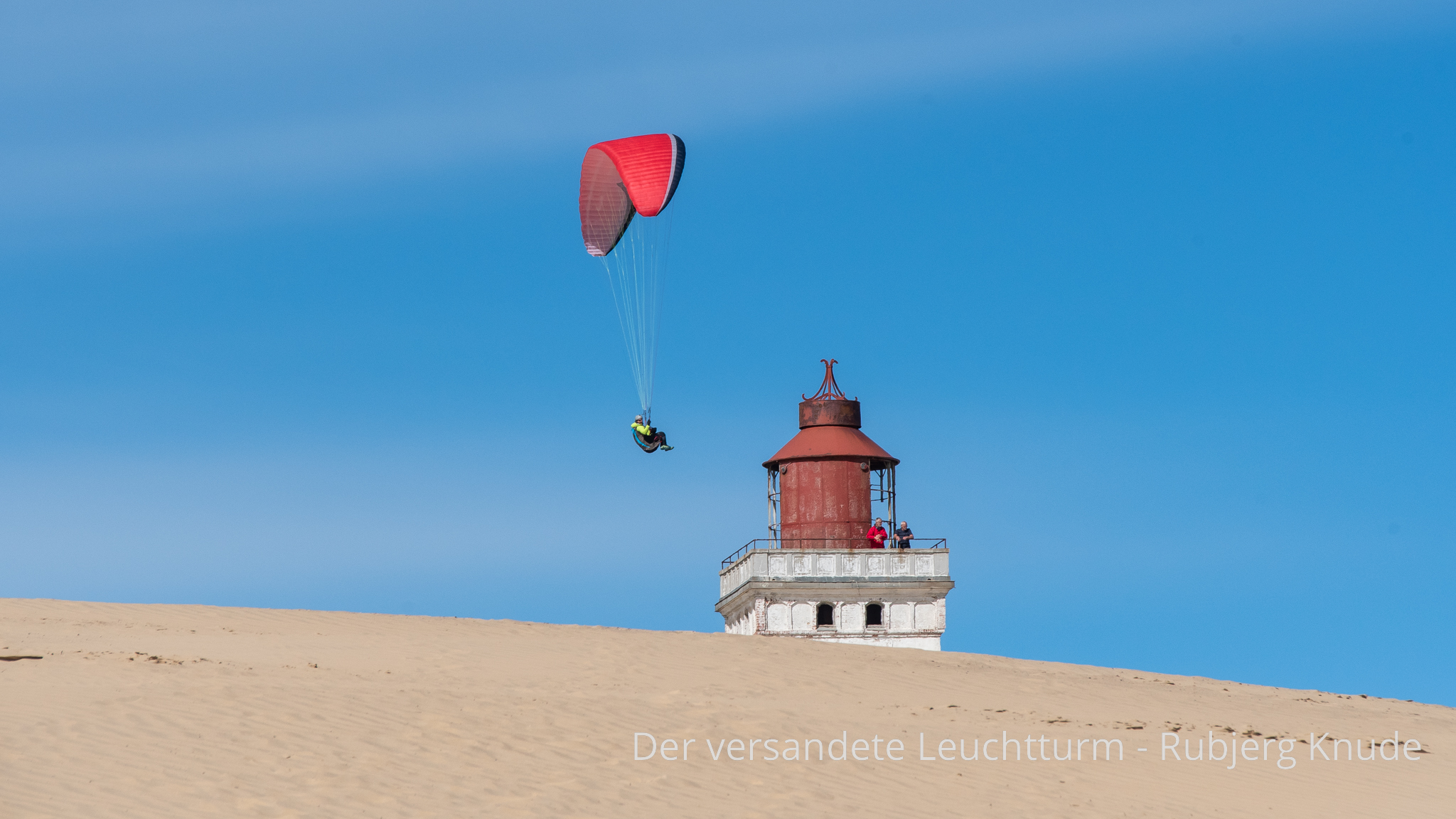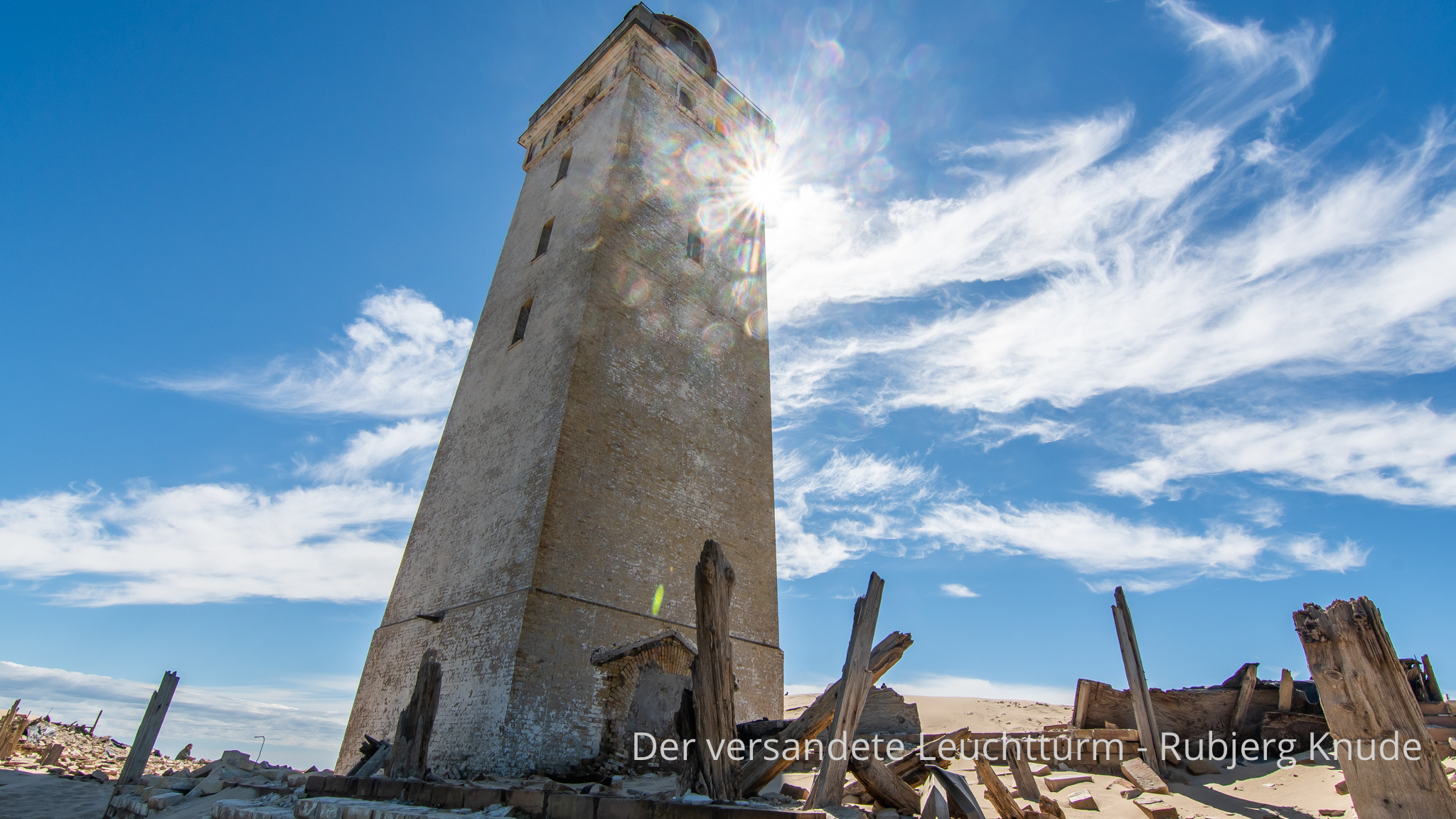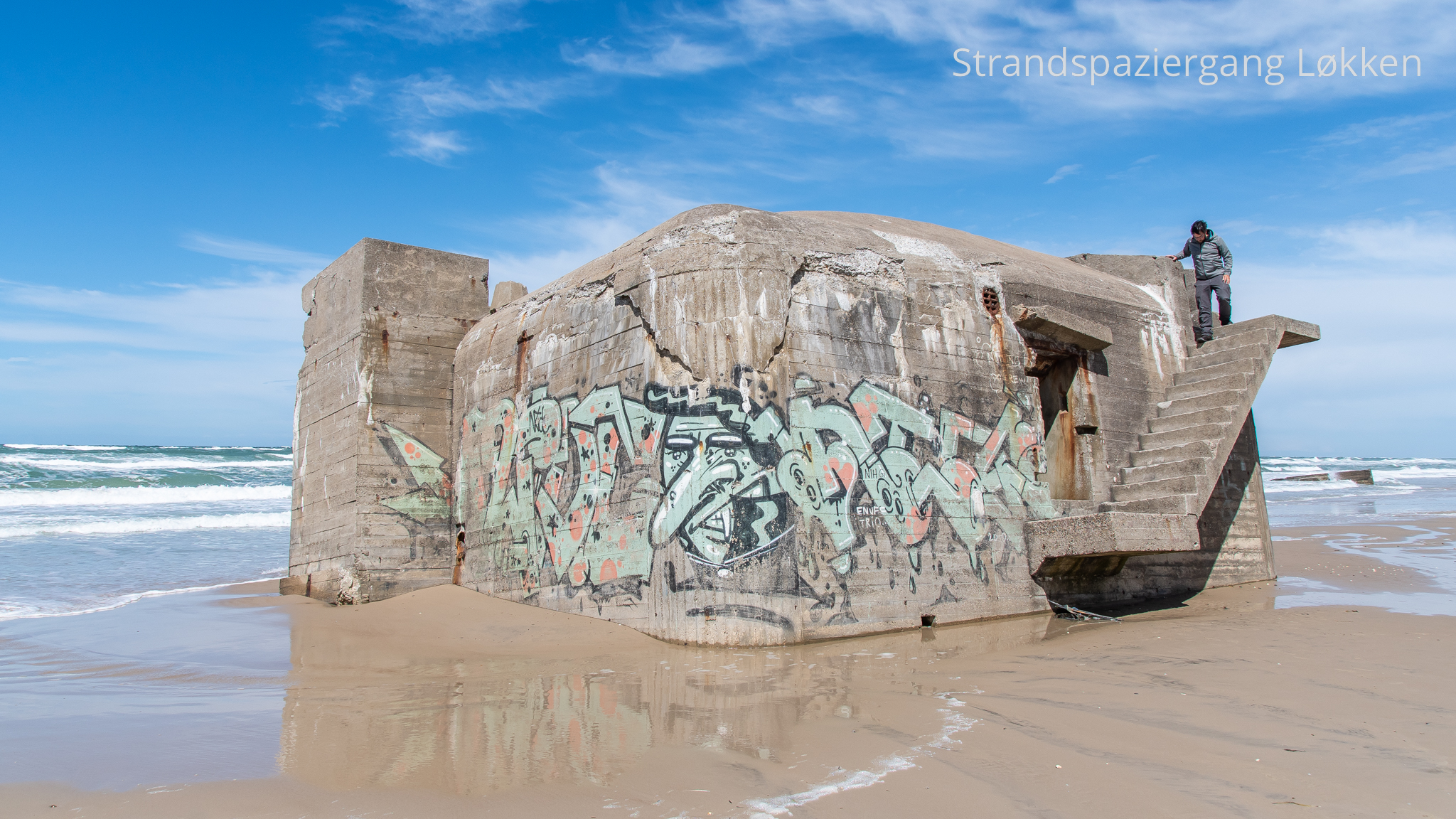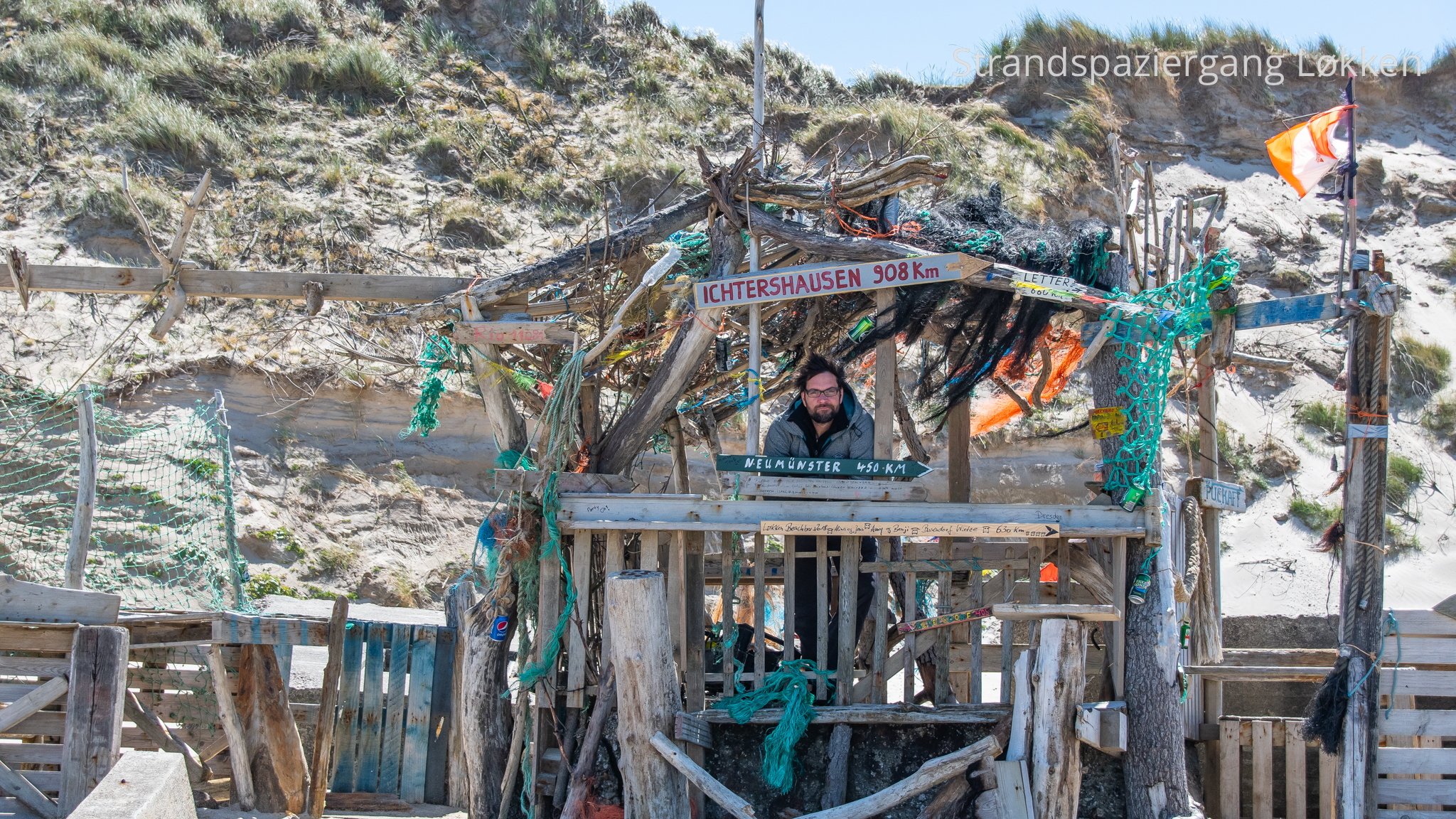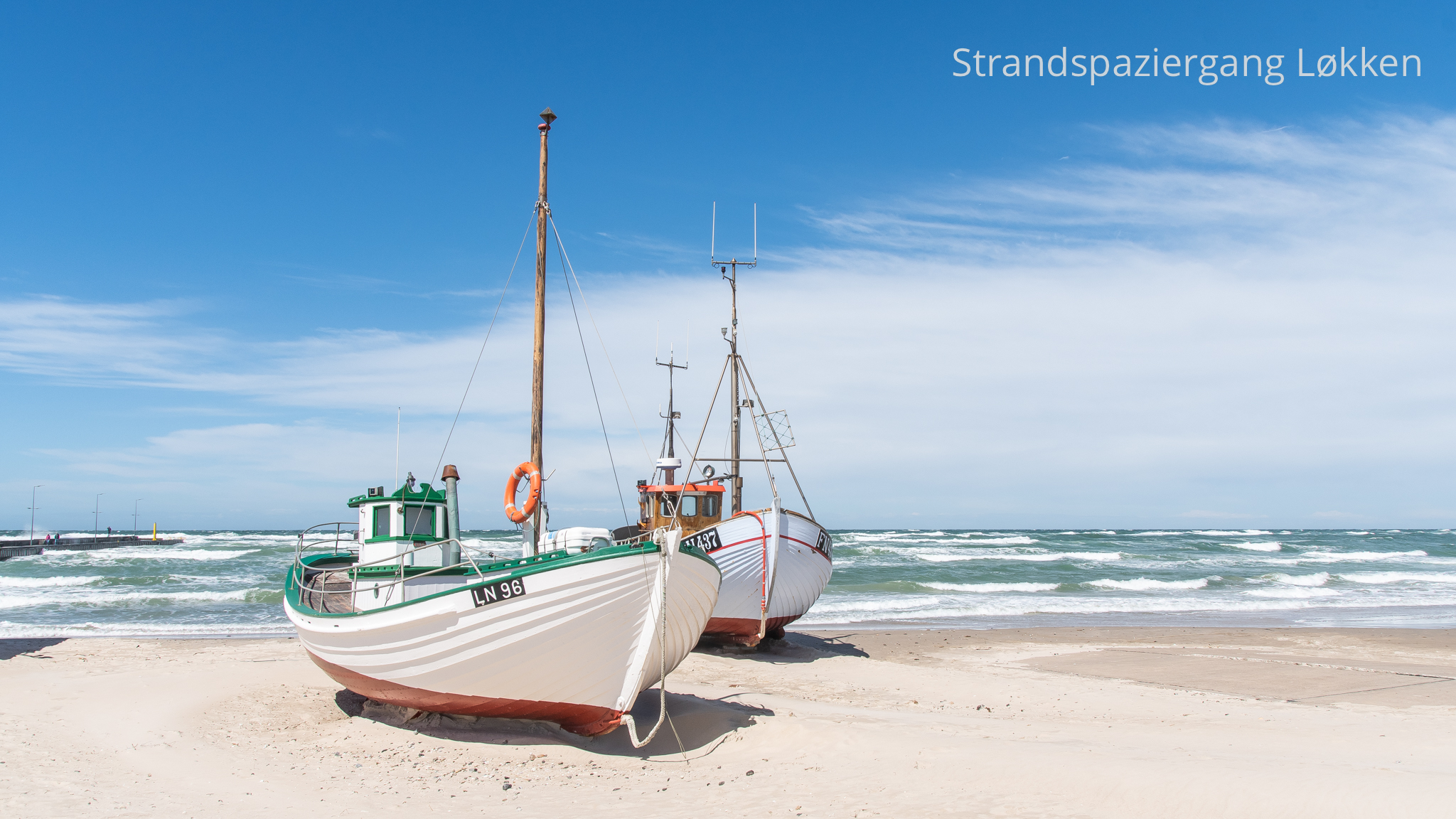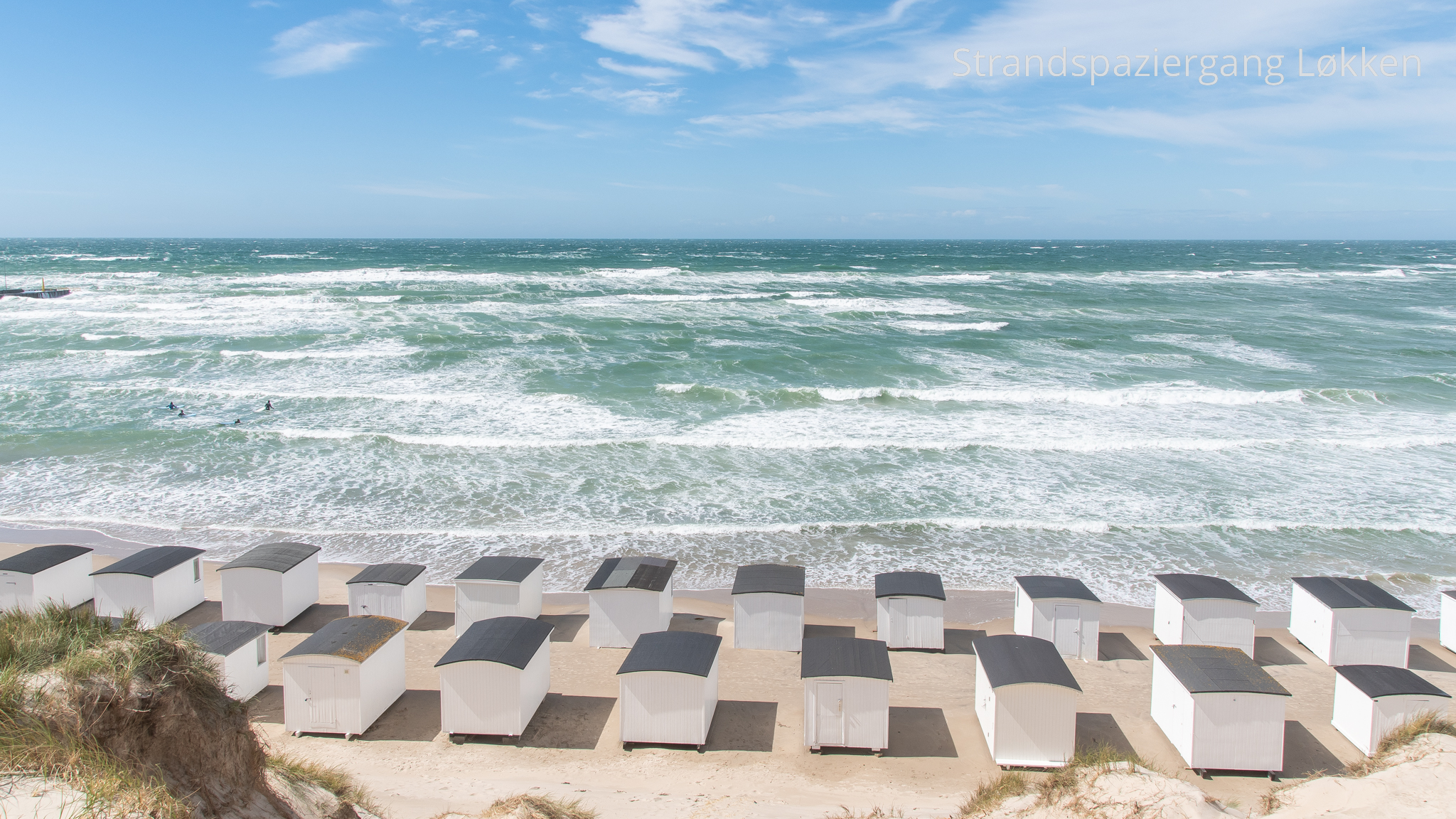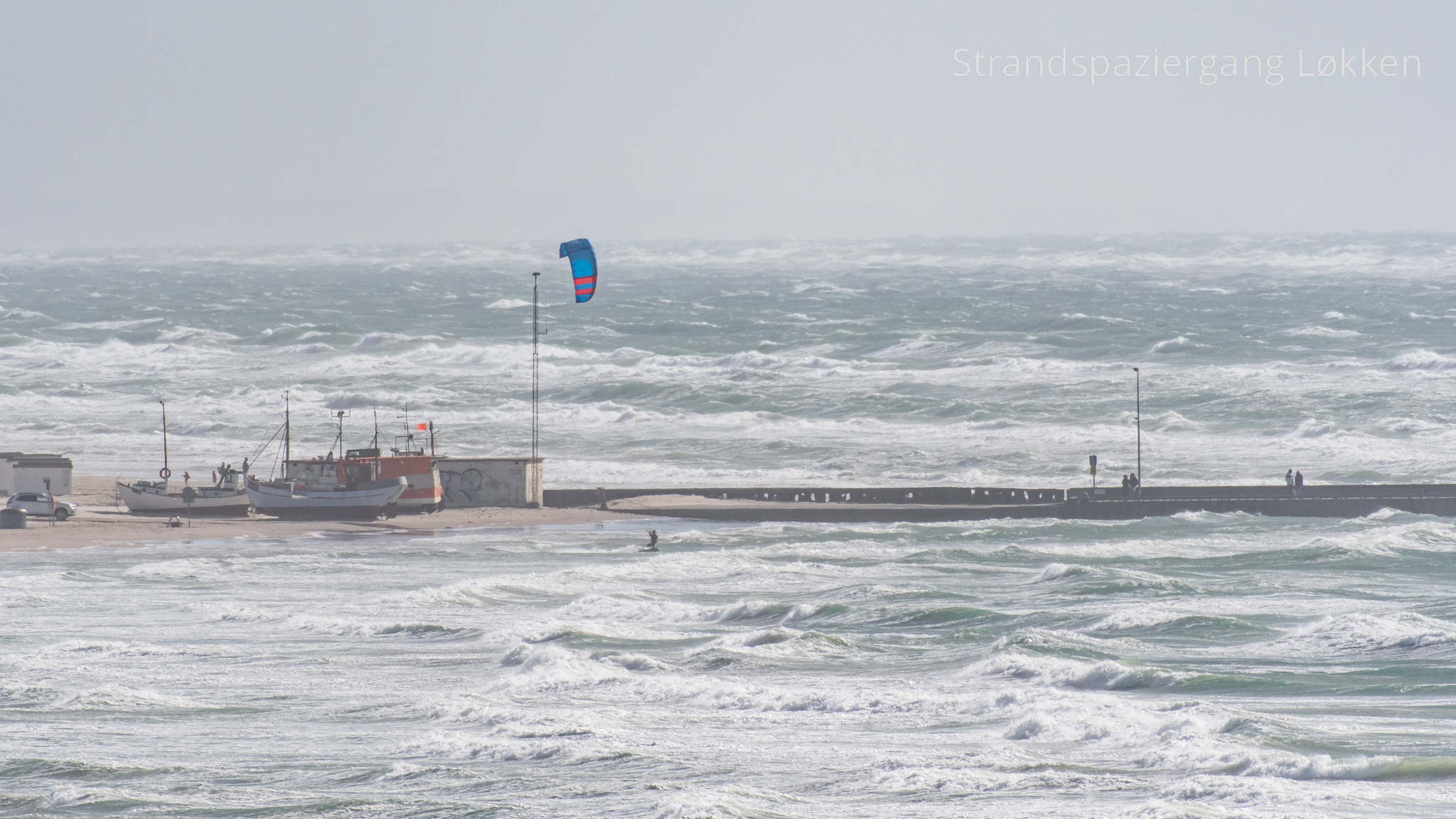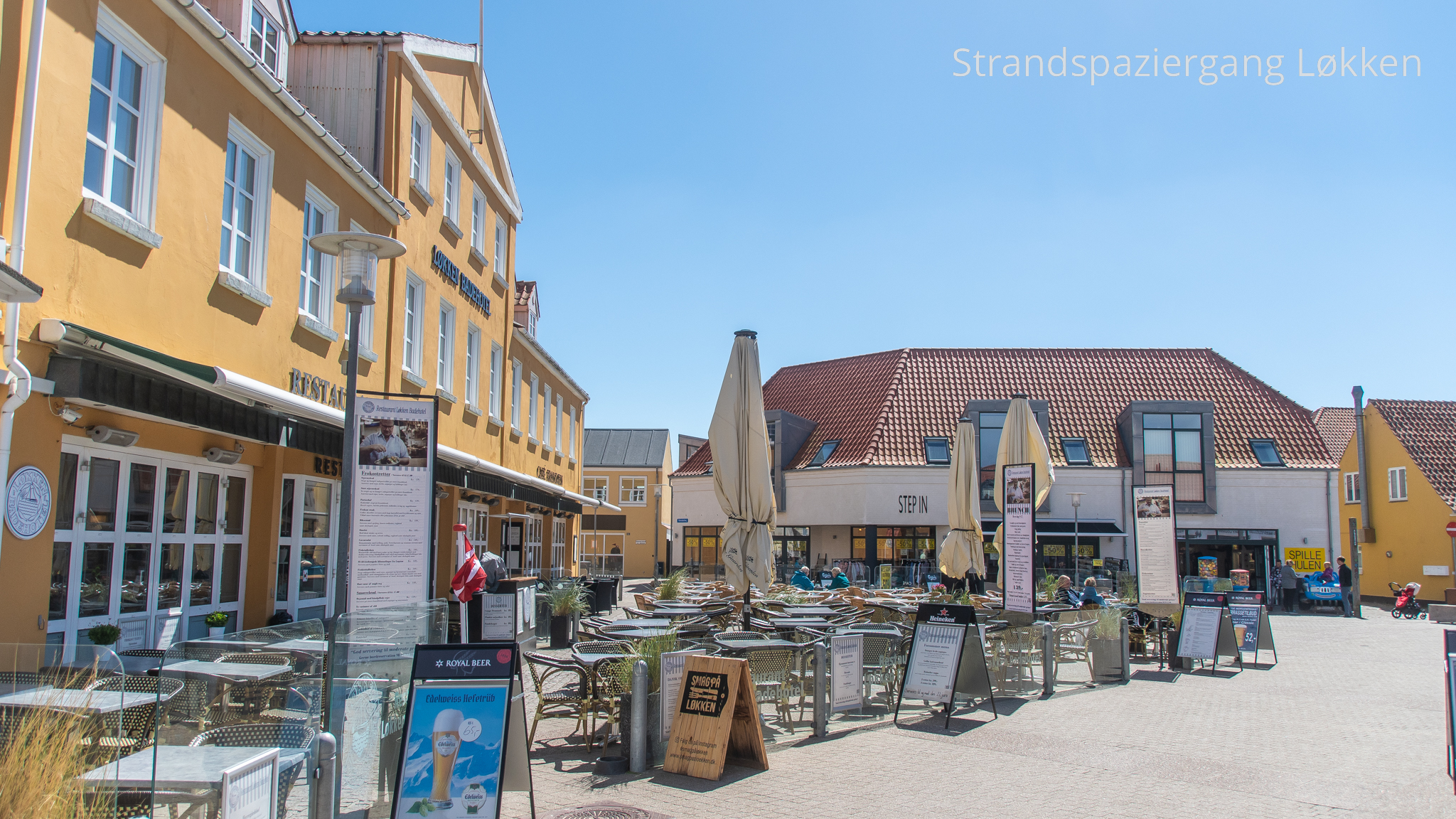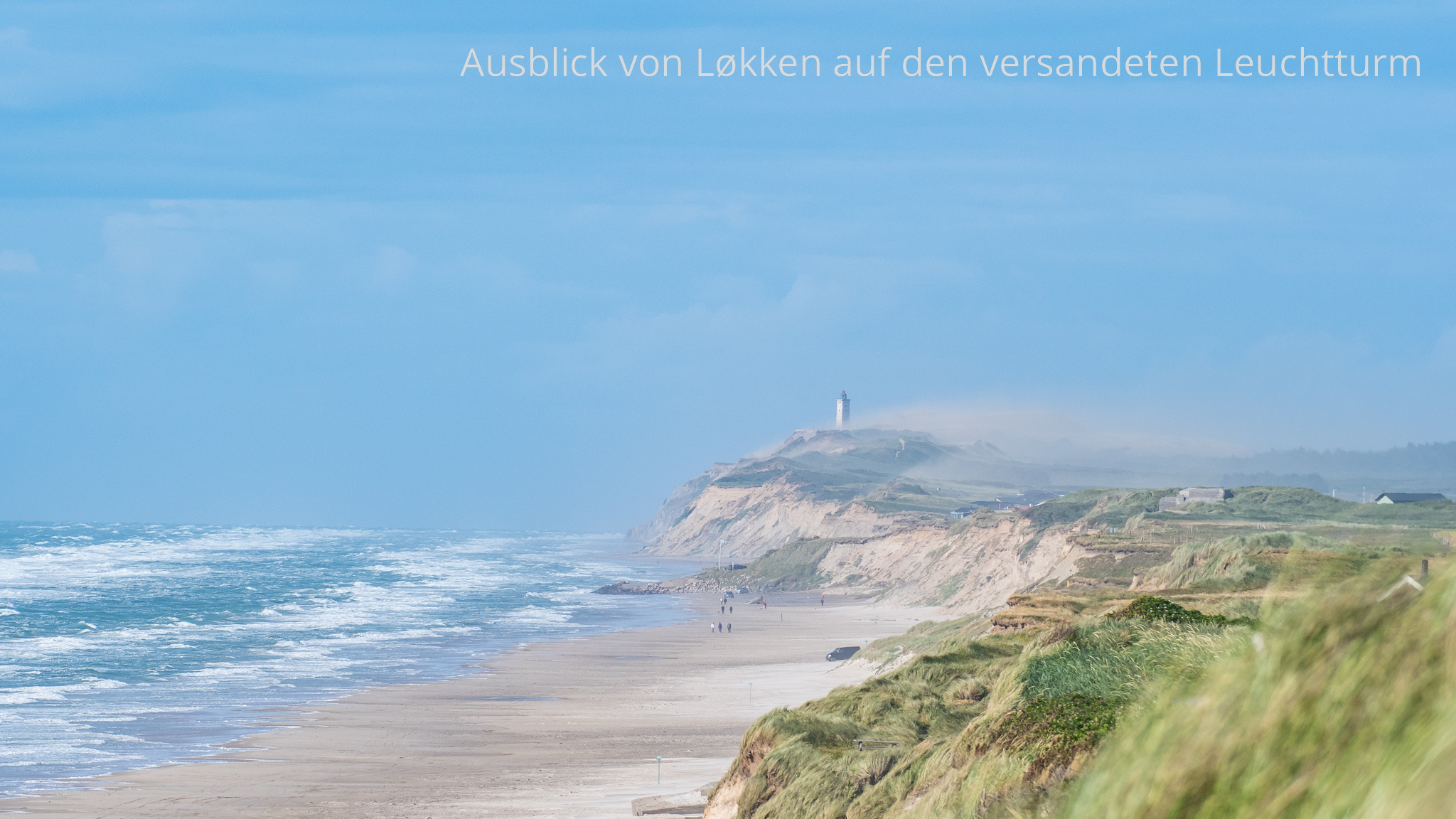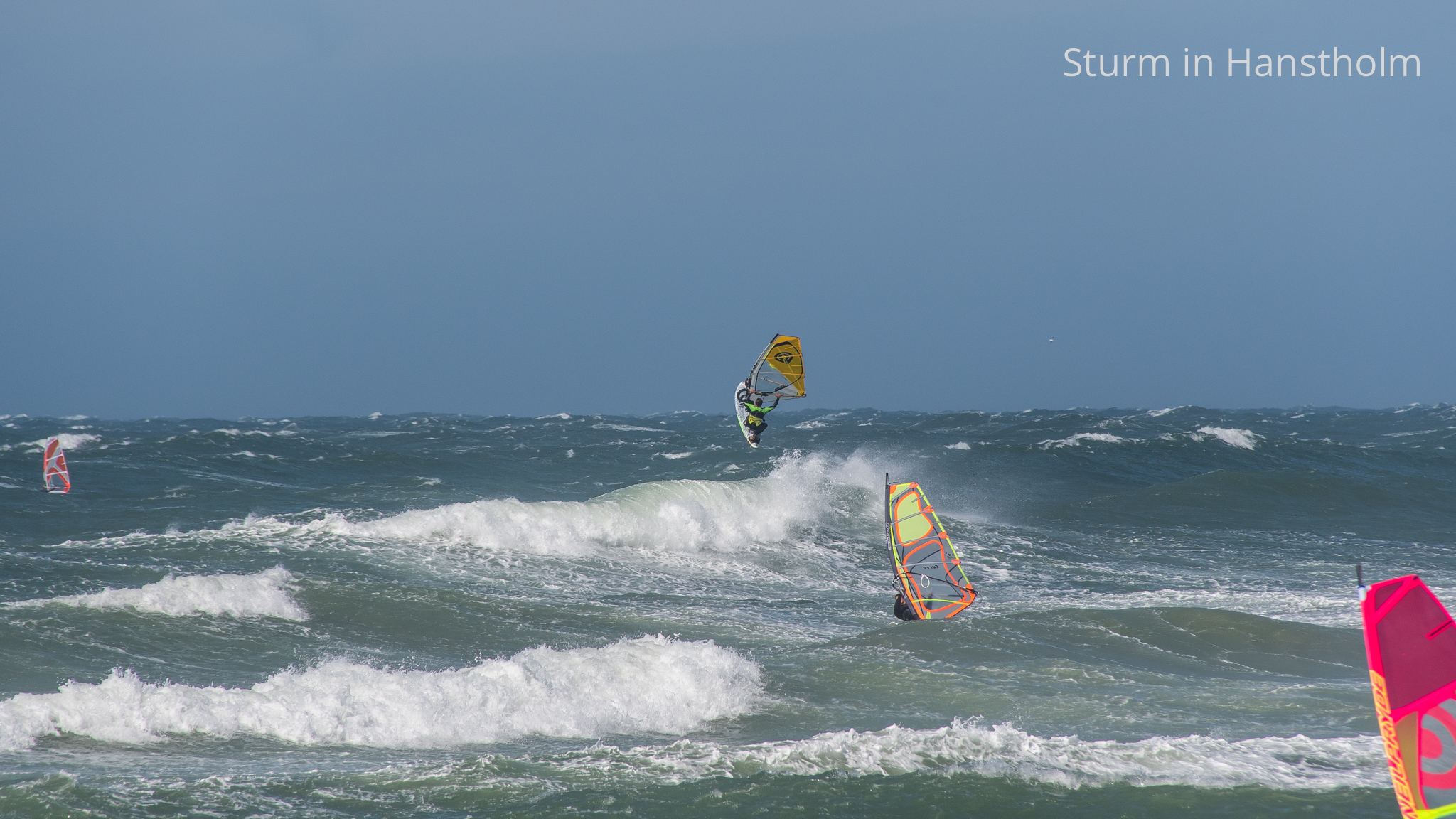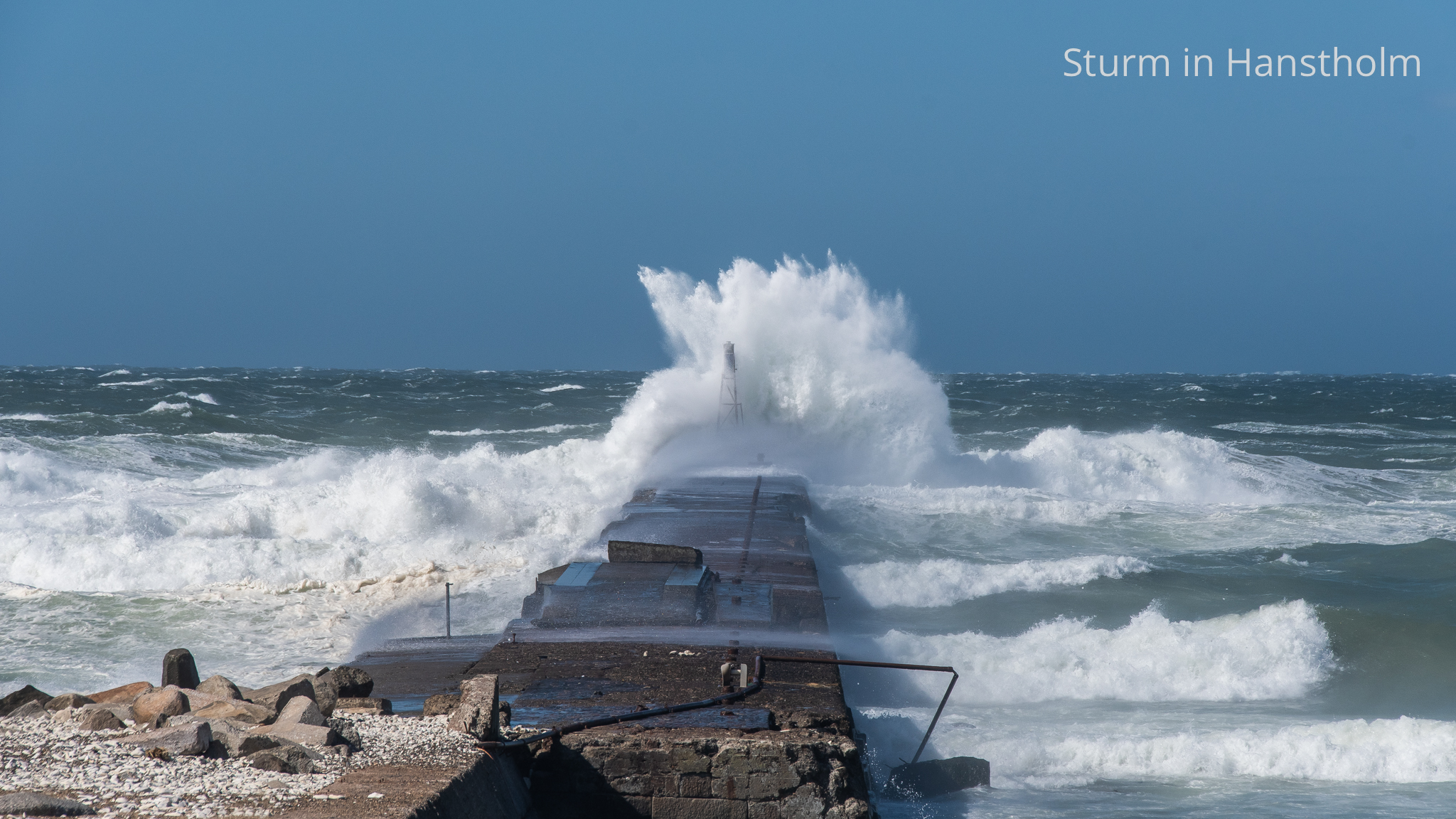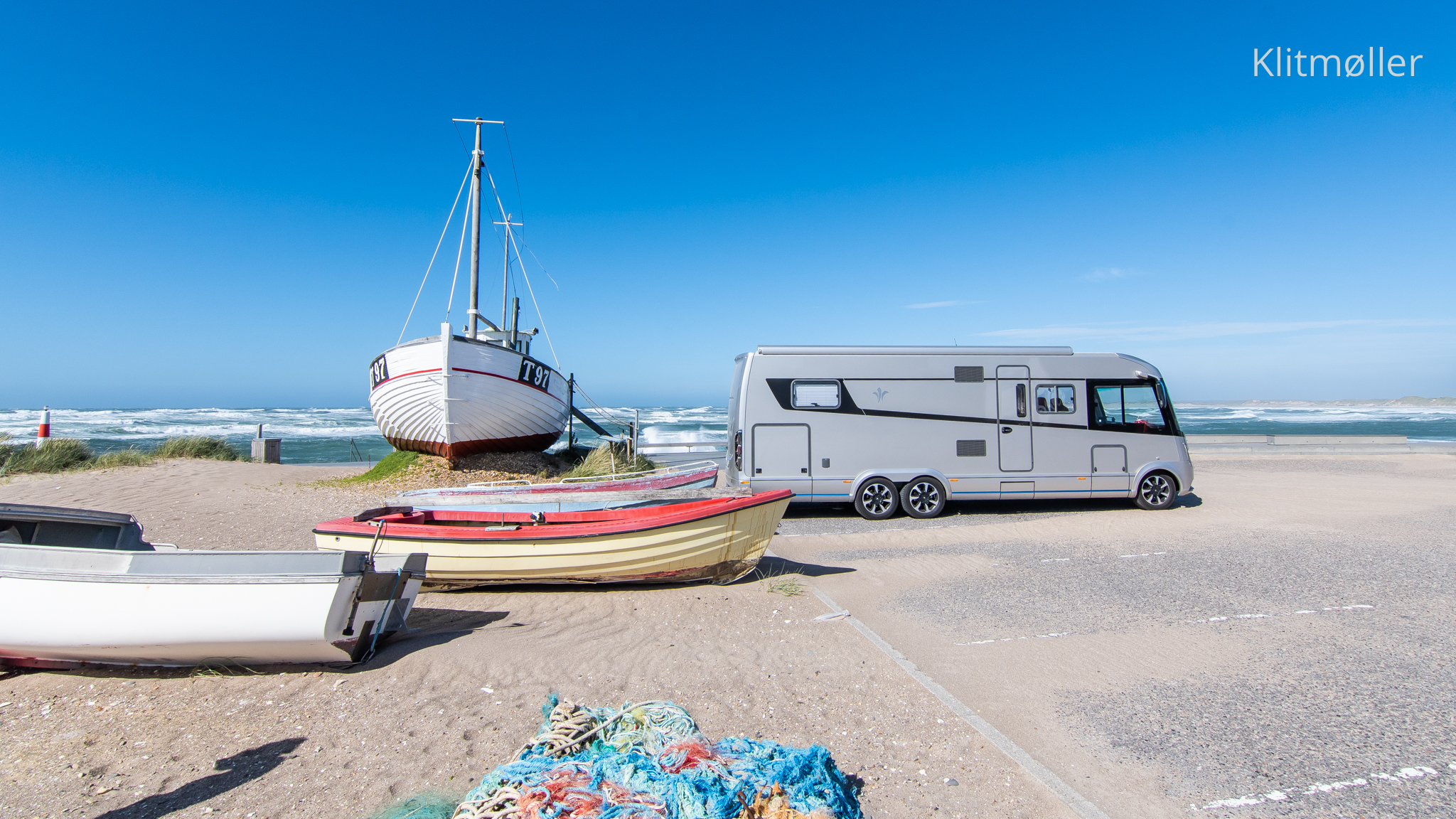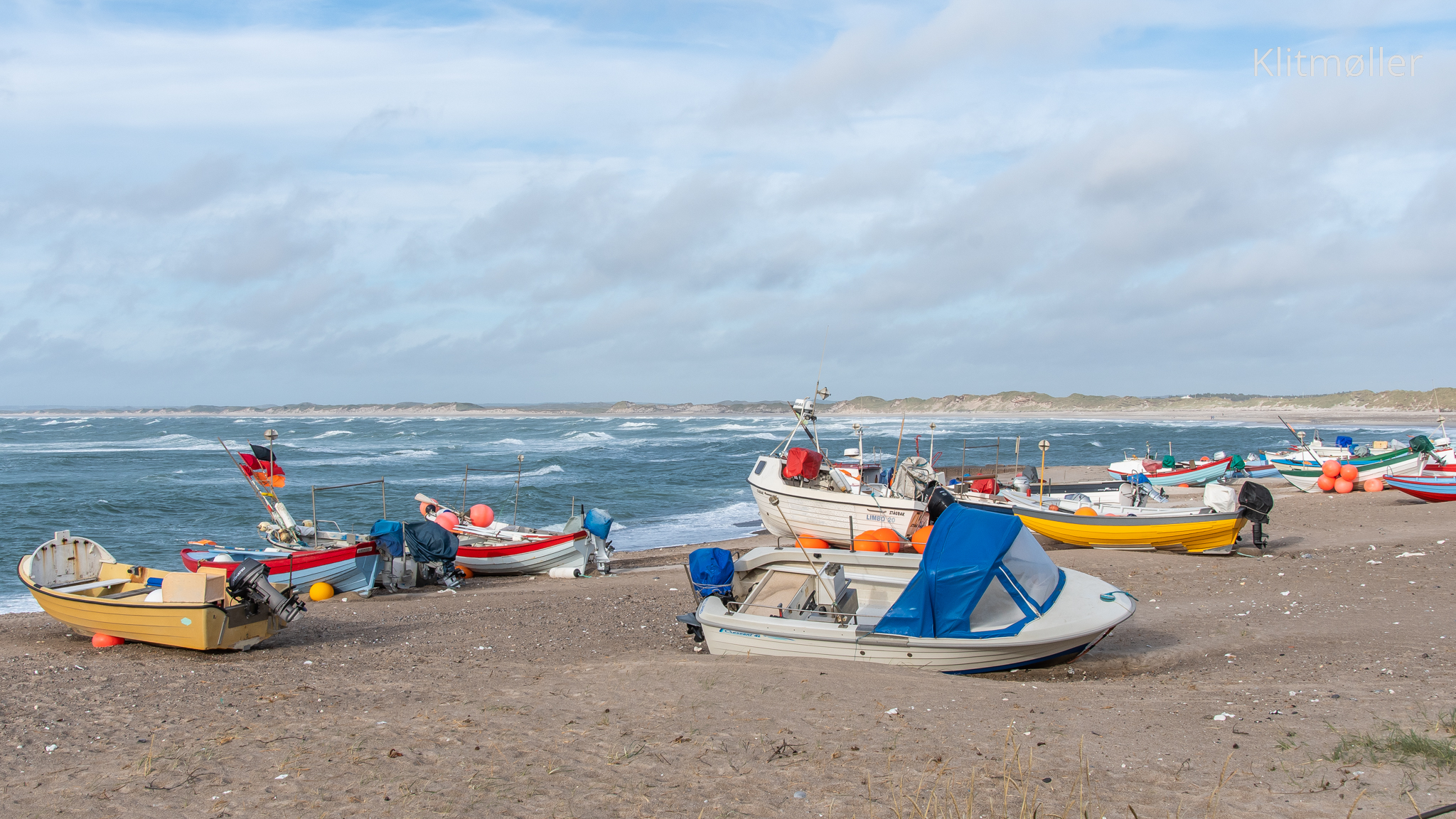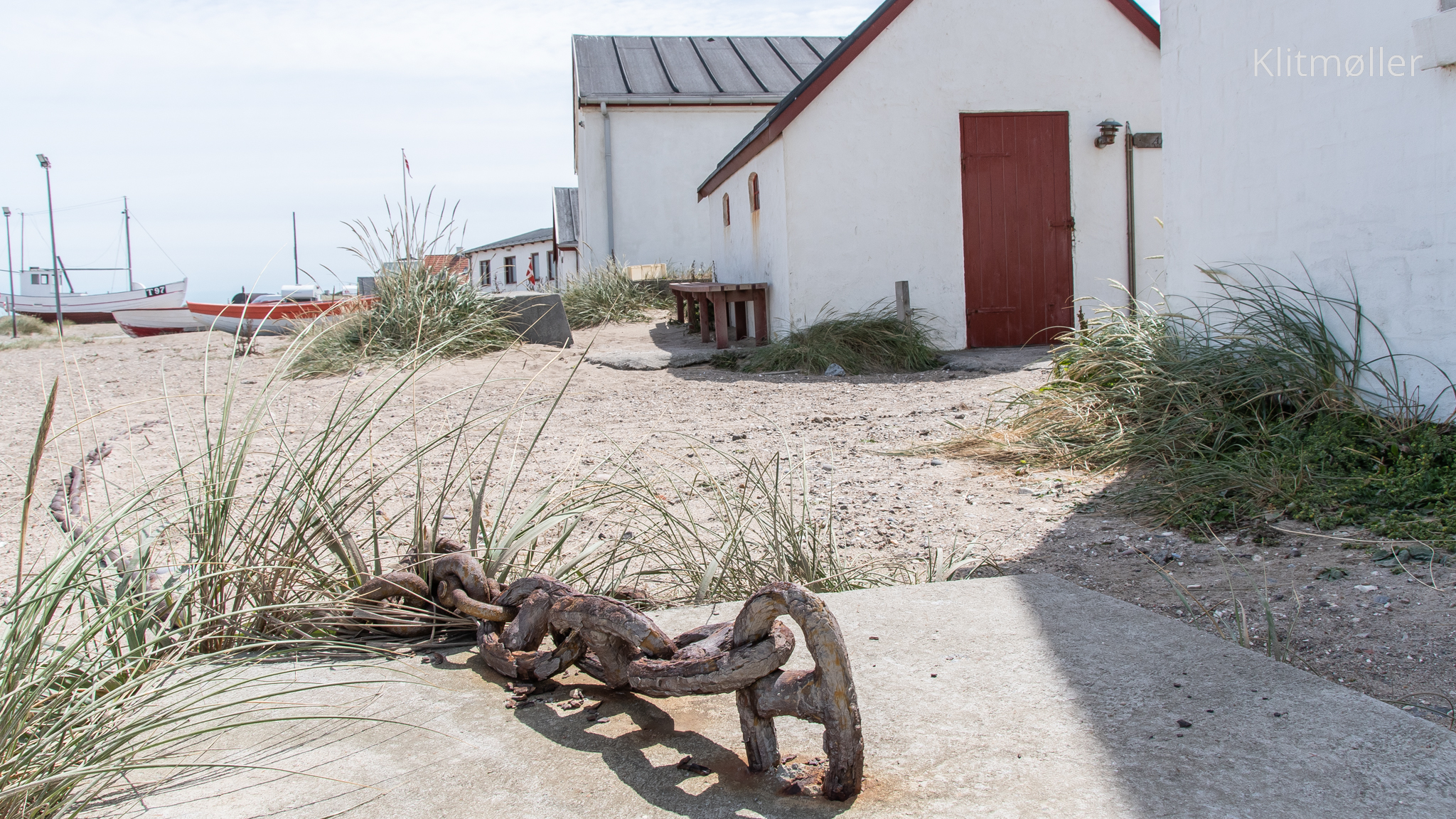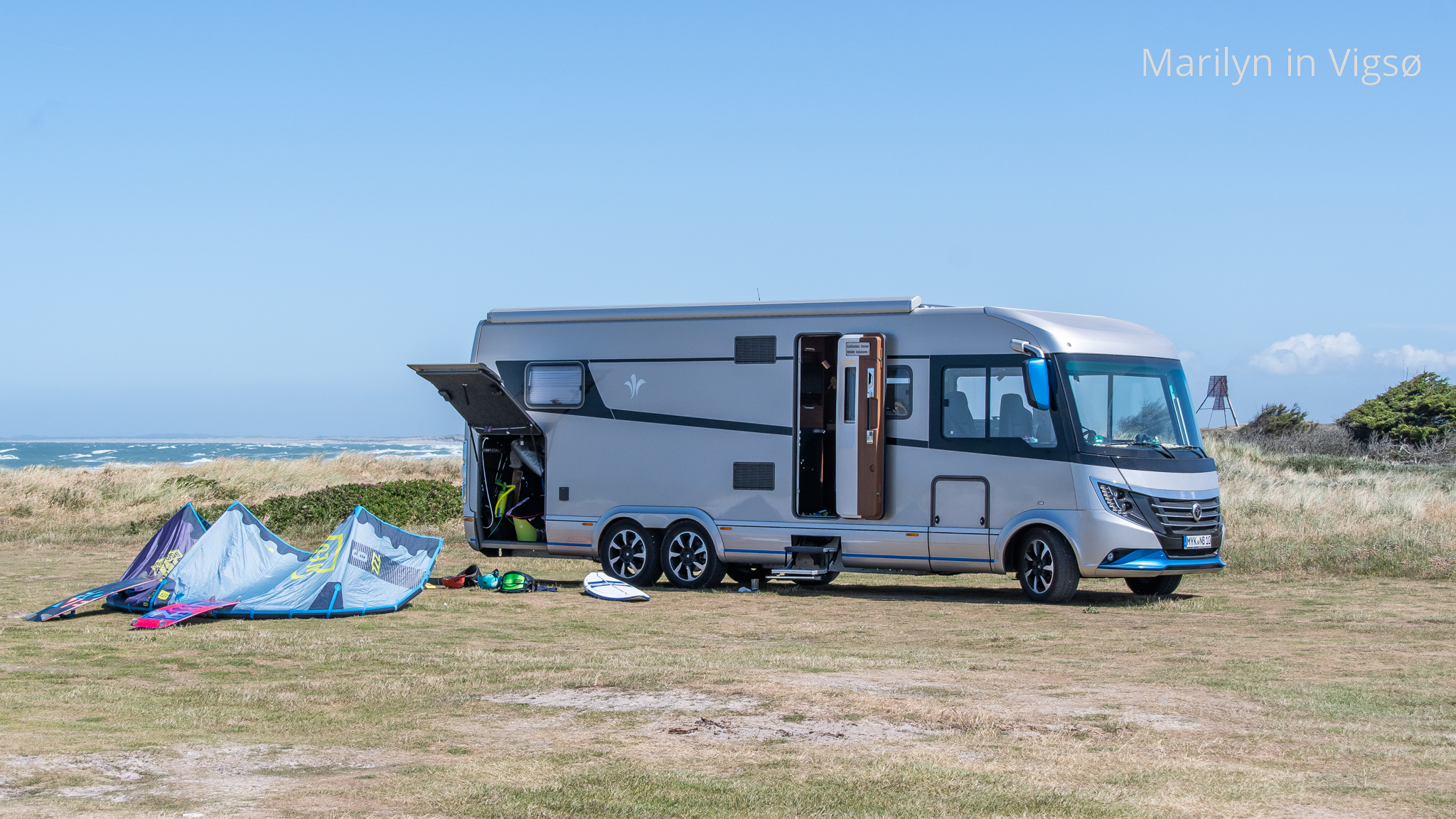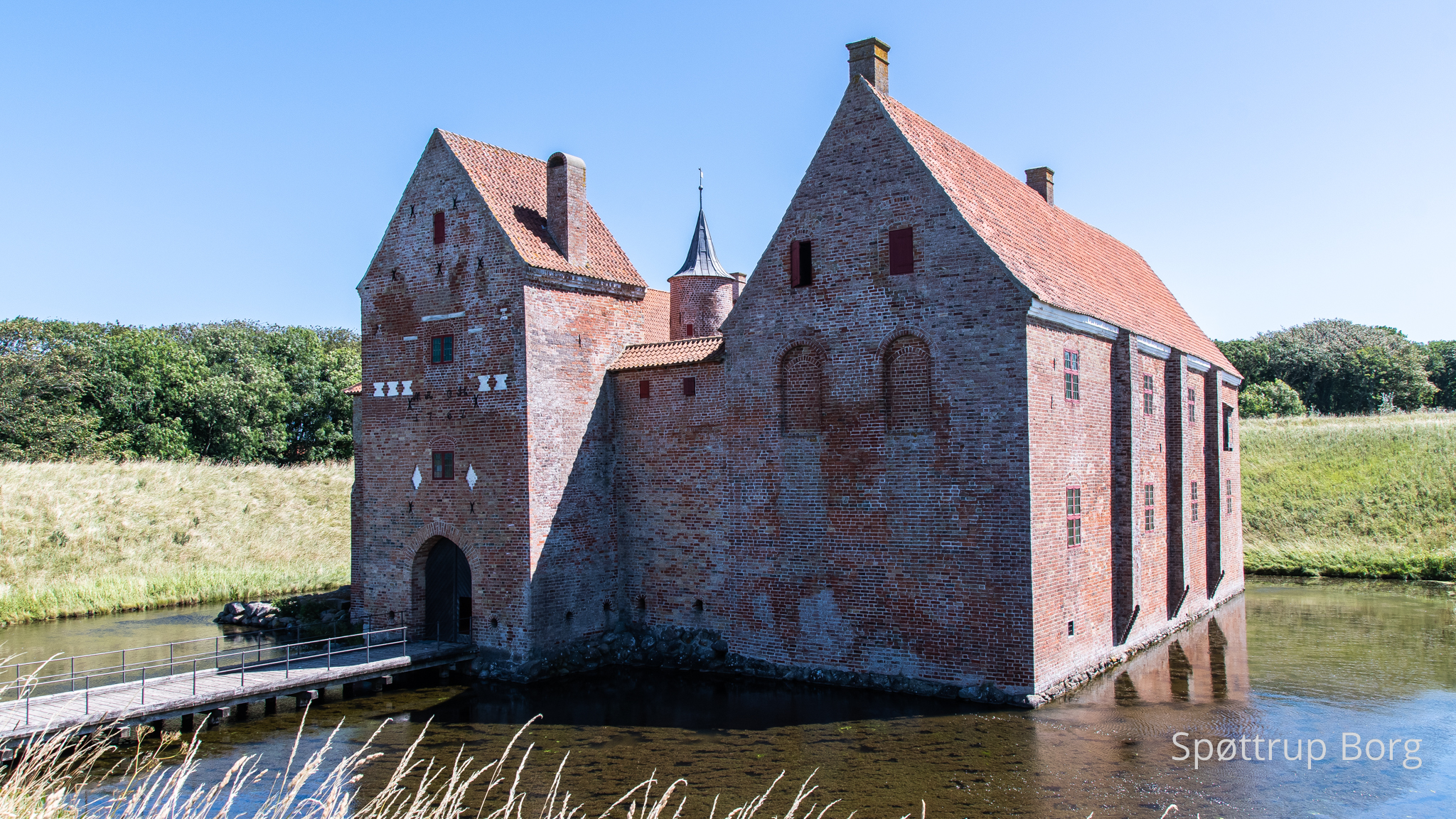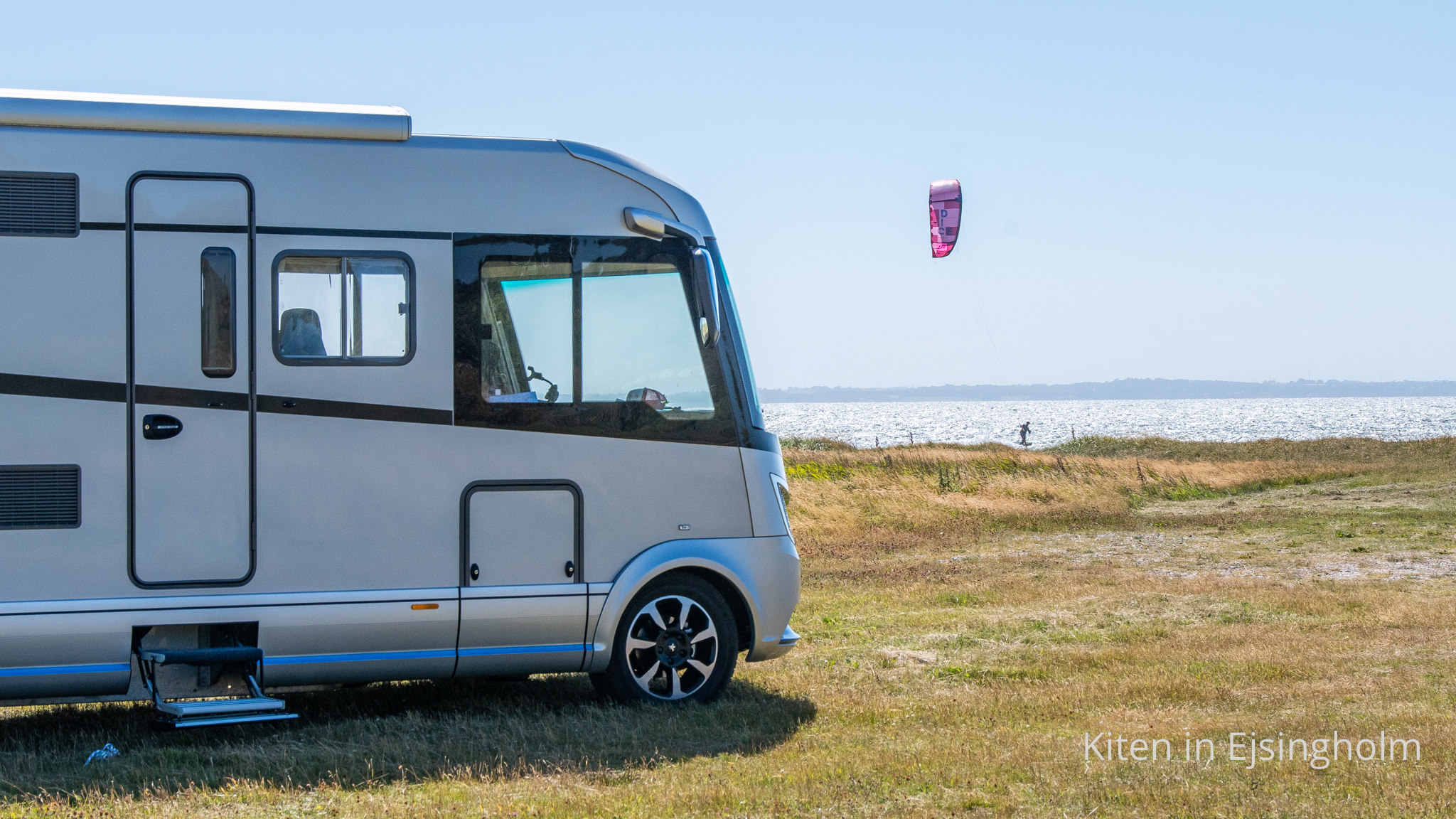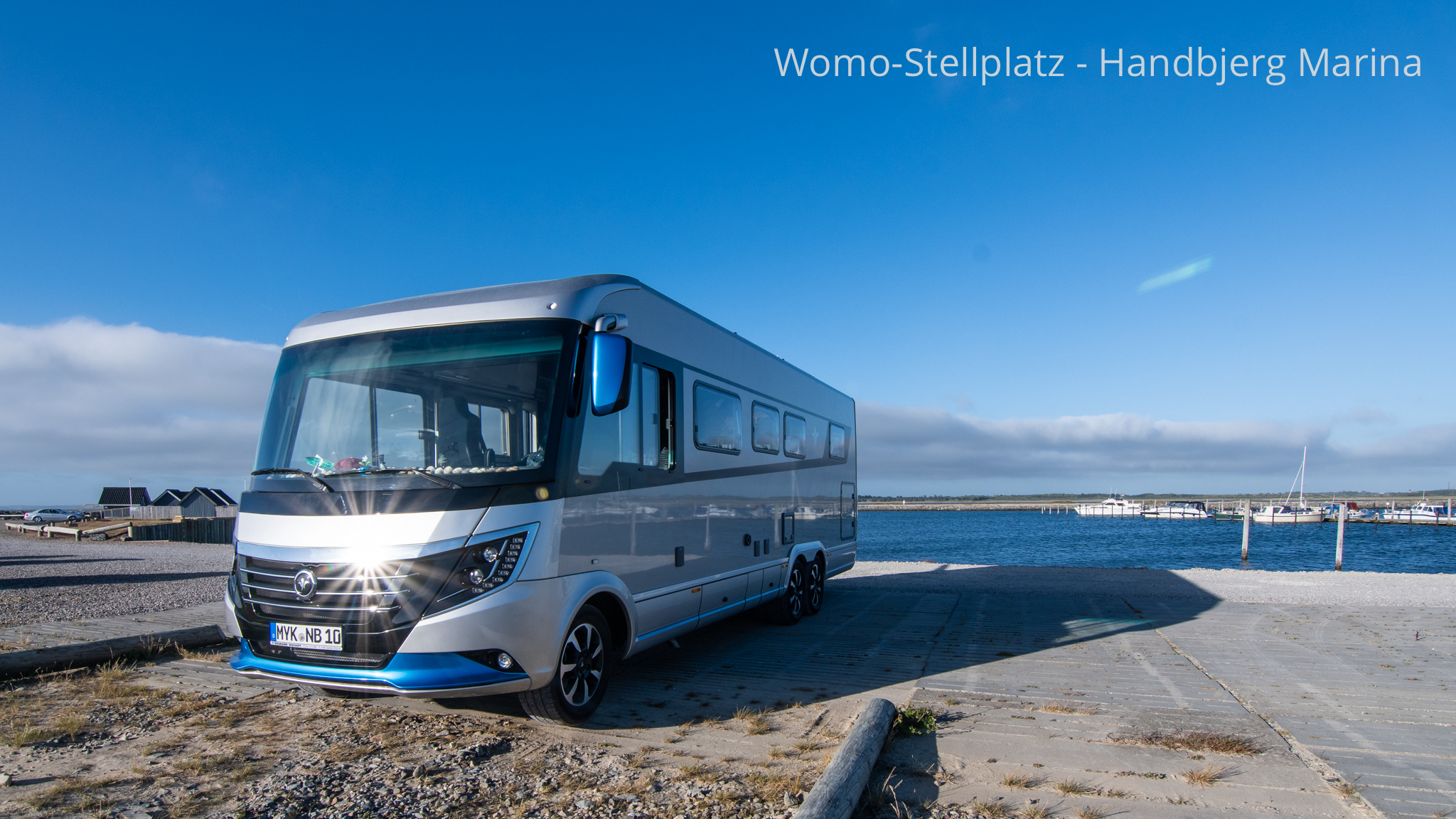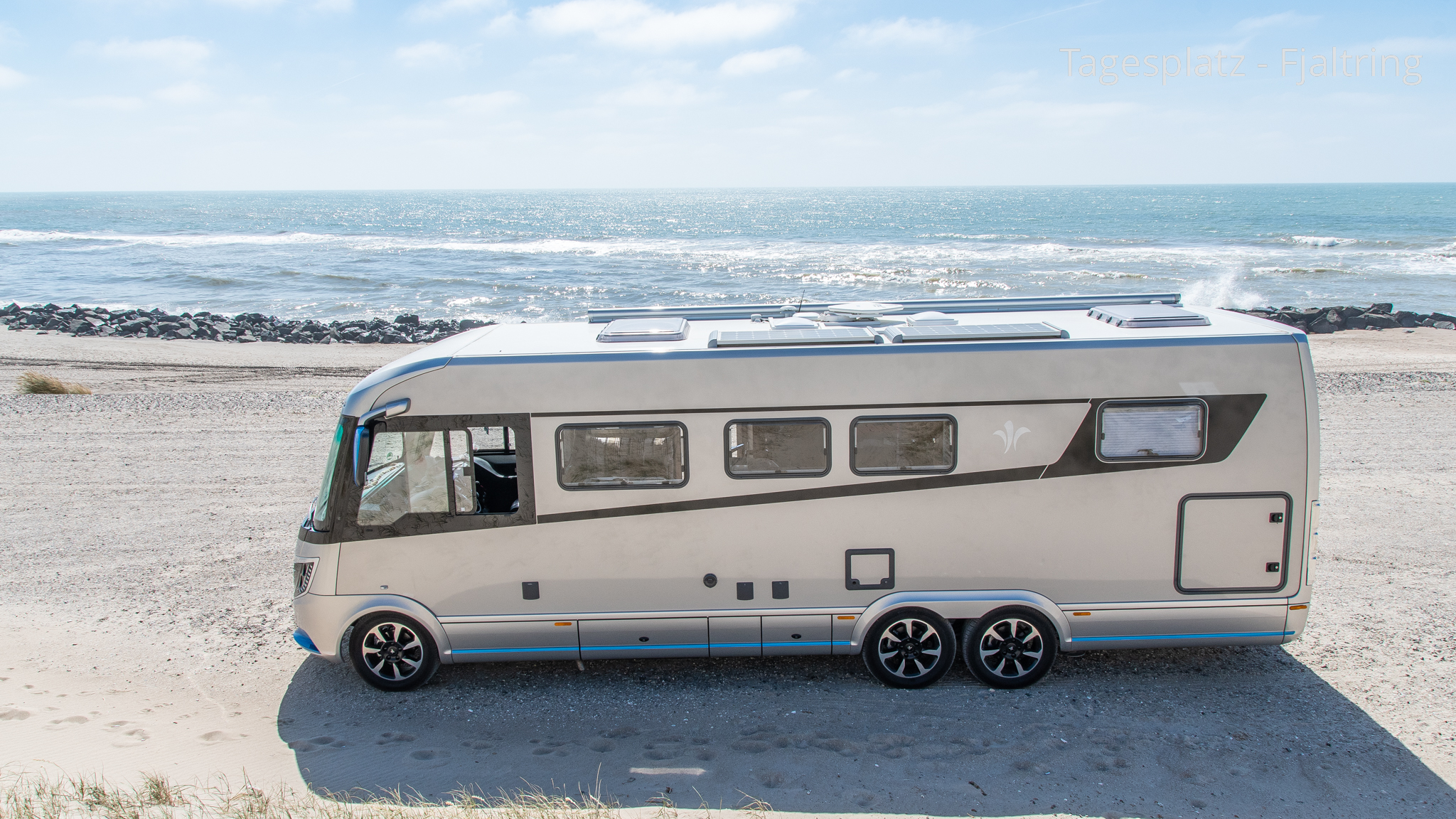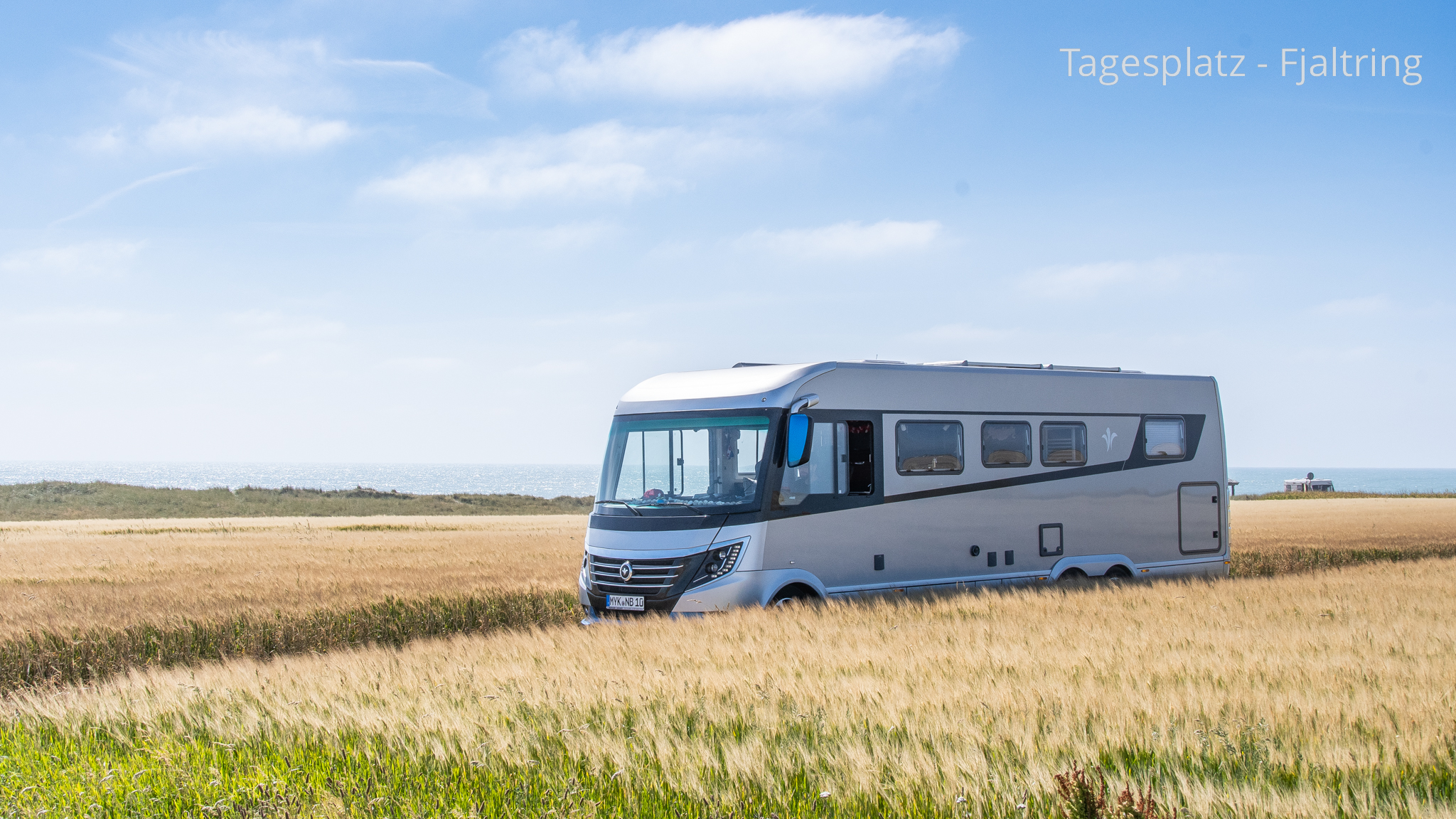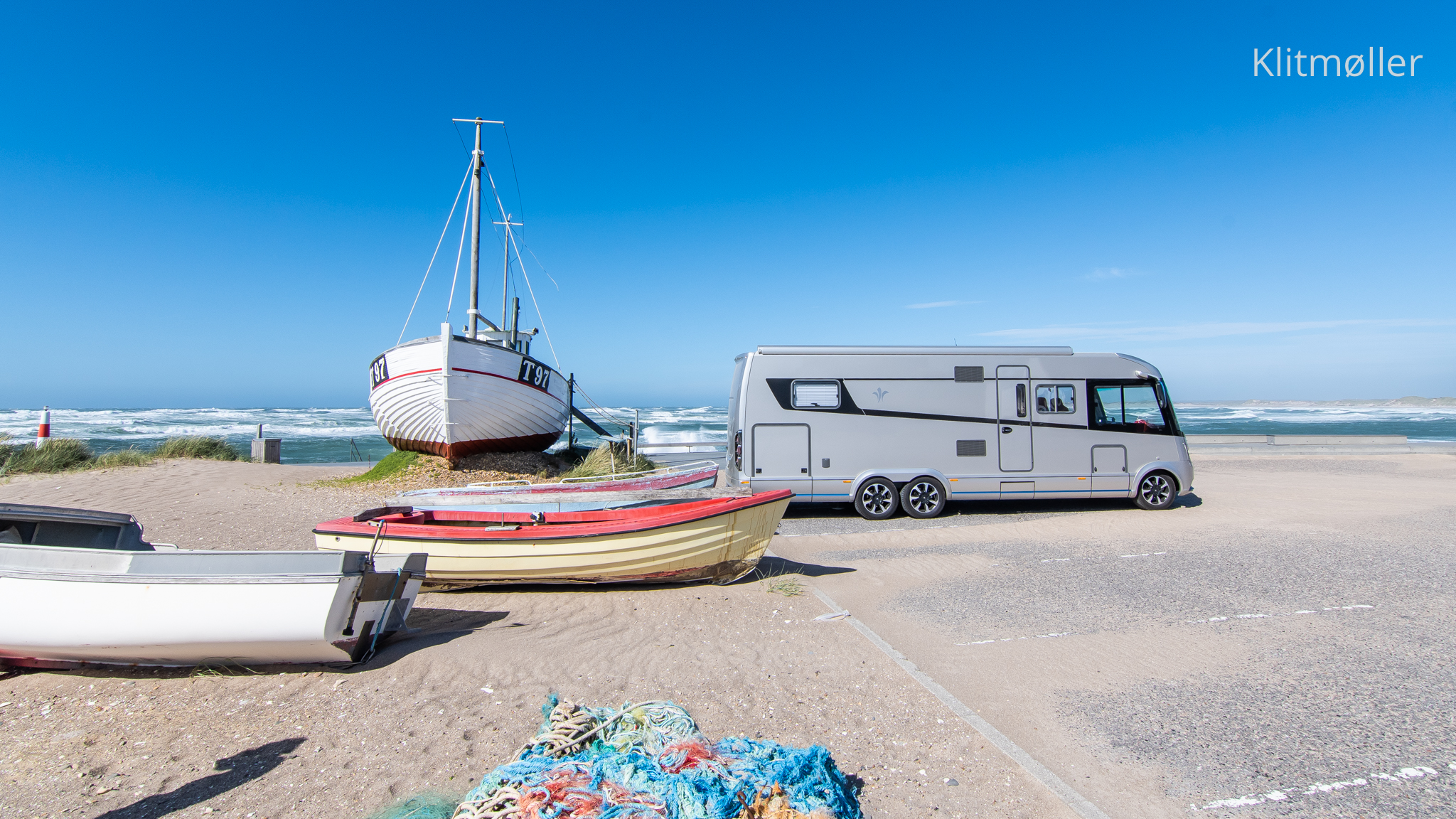
Stranddeko with Arto on Tour in Dänemark Stranddeko Travel Tip DENMARK
You already know we were travelling in Denmark this year. That’s where Marilyn met up with the off-road truck on Rømø. After separating the two again, we continued along the west coat towards the north, which is what we’d like to share with you now.
Denmark is one of the most relaxed travel destinations we know of. We mostly travel along the west coat because it offers us Stranddekos more of everything we need: the sea, dunes and wind. If that’s not enough, you can be sure there’s something to suit every taste. And if this all turns into a declaration of love for a charming little country, please forgive us: it IS enchanting.
First some brief general information about the country and driving a motorhome there: 130 km/h is allowed on motorways and 80 km/h on country roads. With over 3.5 t, you can drive 80 km/h on motorways and 70 km/h on country roads. That can feel really unaccustomed since the roads are so good and often straight. Bo and Marilyn got used to it pretty quickly after some warnings from Frohmi: it’s actually incredibly relaxing and gives you enough time to enjoy your surroundings. Plus you don’t have anyone riding your tail. That’s just how it is here. End of story.
The fuel is a bit more expensive. But often close in price. For quick conversion, you have to divide the kroner by 7.4. In general, food is more expensive, but not as expensive as in Norway. The same is true for going out to eat.
Something that clean freaks should definitely know: there are basically no car washes for motorhomes. At least we haven’t seen any. Bo was pretty unhappy about that as every camper likes to get cleaned up after a couple stormy days. We were finally able to get all the dirt off of Marilyn at the campsite in Klitmøller. Yippee!
And when is the best time to travel? We’ve been there during every season now. We would absolutely recommend every season, including winter. We always travel during the off-season anyway and heard it was really full there during midsummer this year, at least at the hot spots. But that’s how it is everywhere. In general: the further north you go, the more empty it will be. In May and June, you have to expect the weather to still be quite nippy. It often seems a bit milder to us in September. But it’s never been a lay-on-the-beach kind of country, so you should always pack warm and rain-ready clothing.
And where can you sleep? Much like the Netherlands, the number of motorhome campsites is increasing at marinas and in the countryside. Our favourite pitches are at the motorhome campsite on Rømø http://oasen-roemoe.dk. 170 (!!!) beautifully landscaped pitches. And in Hvide Sande, there are three amazing sites where you can sleep near the dunes, harbours or wind turbines. It might be without any supply or disposal – but you don’t always need that, do you :). Our favourite spot is under the wind turbines – what a fantastic setting!
Actually, we can absolutely recommend all of the campsites in Denmark and they are anything but complicated. For Scandinavian countries, you need a camping card which you can easily order online or a temporary one can be applied for at the first campsite. You can find all the information here: www.norcamp.de. That guarantees that checking in is easy. You hand it over at reception and then you can look for your spot and pay if you want to stay longer. We’ve never experienced any pitch restrictions. And there’s always a solution if reception is not open. Either you simply drive in and check in later or there’s a spot to park in front of reception. A lot of sites also offer a QuickStop (just over night) or special offers for motorhomes. The sites that participate provide the relevant brochures. So all in all: you really don’t need to worry about where you’ll stay the night in Denmark. Campsites are everywhere and there’s always a free spot. A night costs from 10-15 euros for a pitch or 25-30 euros for a campsite depending on the location.
Our absolute favourite campsites are:
what we call ‘fluffy dune campsites’. They got their name because they’re tucked into the dune landscape, no hedges, no plots, simply beautiful and of course within walking distance from the sea:
http://www.lyngvigcamping.dk/de/(Go in winter, too. We were here during Christmas once – faaaaaantastic!)
https://børsmosecamping.dk/de/(Located in southern Denmark. Great dunes + surrounded by heathland)
http://www.strandgaardenscamping.dk (In Nørre Vorupør, very simple, but great)
We also stopped at two particularly attractive campsites during our trip:
http://www.nystrupcampingklitmoller.dk/de_index.html (Drive onto the surfing lawn here, affordable)
http://de.loekkencamping.dk (with a fantastic view located on the steep coast)
That was a lot of information for anyone who hasn’t been to Denmark yet. But where did we go exactly during our two-week road trip: first, we are totally proud that we actually managed to stay in one place for two to three days. It was actually extremely relaxing and we’re trying to practice it more. It‘s also because we know Denmark really well now and have been all over, from right to left and top to bottom. This time we just stayed right on the west coast. We just felt like having a lot more of the sea. I don’t think any other country can provide more water, sand and dunes at once. The entire way up the west coast is one single beach, sometimes with as a steep coast, sometimes with so much space you can drive along it. And you can always “get to it”.
We were of course in Hvide Sande. The old fishing town is a sort of tourist stronghold. But of course without hotel blocks, you won’t find those in Denmark. On a small isthmus between Ringkøbing Fjord and the sea where the only inlet is between the fjord and the sea. It’s one of our “places to be”. Despite the increasing number of tourists, it’s still charming and a nice size. You can do some shopping, there are a few restaurants, a new stylish surf café, an amazing bakery (!!!), a fish shop and a bit more to discover. Of course there are three pitches and all kinds of surfing spots in the surrounding area. The site to the south at the South pier surf spot is within walking distance from the village. https://www.campercontact.com/de/hvidesande
If you’re looking for a larger town, the town Ringkøbing to the north of the fjord is a good recommendation. A great city centre, wonderful little shops and a site that’s within walking distance from the water. https://www.campercontact.com/de/ringkøbing. It could be a bit tight for big machines.
We then found ourselves wandering further north: the lighthouse surrounded by sand was our destination. A lighthouse that unfortunately has a migrating dune around it. When we were there about 12 years ago, it was half buried in sand. Now it’s freed up enough to be able to go up a set of installed stairs. On that day, a battalion of paragliders were in flight and they were battling it out to see who could fly closest to the lighthouse. It’s a great place for great photos and great hikes and looooots of sand! Of course – as is often the case in Denmark – it’s free of charge and not fenced off. Frohmi absolutely wanted to come back because with two metres of coast eroding each year, it’s days are numbered.
To visit the lighthouse, we stayed in Løkken. A town about 10 km to the south. Camping on Løkken beach. That’s where we had the best stormy beach walk of our holiday. There are about 3 km of beach from the campsite to the town and plenty to discover. Bunker ruins – tranquil witnesses of an ugly time that are simply being used in a new way and integrated into beach life. Flotsam and jetsam beach bars, beach houses, fishing boats and stormy views. The town itself is beautifully smartened up in Skagen yellow and invites you to take a stroll or have a bite to eat.
Because an epic storm had been forecasted for the coming weekend, we decided to check out a windy “Cold Hawaii”. Until now, it had always been calm when we were up here. The area around Hanstholm and Klitmøller has managed to become THE surfer heartland since the 80s. We have to add, by the way, that Marilyn did an excellent job battling her way through the storm and wind. It was as if she’d been made for it. We really are in love with our double-axle star: she just drives and drives and drives. She goes the lengths :) and is happiest going straight ahead. And then you have the ground stand system, which seemed rather unnecessary to us to begin with. As for exactly how much she rocks on site during a storm: virtually NOT AT ALL! You can count on a good night’s sleep. Cool.
In the “Thy” region in Hanstholm, we watched the freaks out on the water. When the conditions are like that, we prefer to watch: wind speeds of 8 to 9 and 4 m waves. Then you get to watch an air show and can shoot some great photos of waves.
We stayed the night in Klitmøller on the campsite we mentioned earlier. Klitmøller as a town is worth seeing as well. The surfer cliché is lived out here in the nicest way on every corner and you can take some great walks along the beach. The town itself is still very authentic and very nicely maintained.
We also had a great kite day in Vigsø. The wind was a bit more moderate the day after the storm, Marco was here again with his beach explorer and brought us to an empty bay north of Hanstholm that is good for driving. All four of us went out in the water and Marilyn really liked living on the outskirts.
Something you can really get a good look at in Denmark are fortresses and castles. Frohmi absolutely wanted to have that on our agenda. We found the mediaeval Spøttrup Fortress in the south of the Limfjord region and had the place all to ourselves on Monday morning. It was almost spooky in the gloomy walls. Castles and fortresses are located all over Denmark. They seem to be quite close together on the Baltic Sea island Fyn, where there are quite a few enchanted areas, castles and lovely villages to discover.
The rest of the day brought unexpected wind and we found one of those “insanely” crowded kite spots in Denmark, this time on a fjord. Man, it would be great to stay here longer... we drove to a newly designed marina for the night and had the place all to ourselves.
Over the next few days, we slowly made our way back down south. We made a stop at a nice day site by the sea and stayed the night in Hvide Sande again. Then Frohmi could raid the little shops again during the day...
We spent the last night at Børsmose Strand Camping which is pretty far south in Denmark. A superb site in the dunes with a lovely beach and a perfect farewell sunset for Marilyn and us.
On the west coast, we would also recommend the towns Esbjerg (a bigger seaport town) and Ribe. Ribe has three motorhome campsites and is particularly charming as Denmark’s oldest town.
If that’s not enough for you, we can only warmly recommend Copenhagen. We were there a few years ago and are still impressed. Unfortunately, there isn’t a city campsite yet. But you’ll definitely find something in the surrounding area. Make sure to go into the city on a bike!! You have the complete right of way as a cyclist. It’s totally confusing as a German! There are extra-wide bike lanes, everything is regulated and cars have to somehow fit themselves around you and do so very nicely. Copenhagen is the capital city of design. In general, Danish design is renowned worldwide, and you’ll find a concentrated amount there. That combined with the historic city and new buildings makes for a great atmosphere!
So, that’s the end of our declaration of love. We hope there was something to offer both Denmark “veterans” and newbies and that you enjoyed it all! As always, you can find our detailed holiday reviews at www.stranddeko.de
If you have any questions, just ask us. :)
